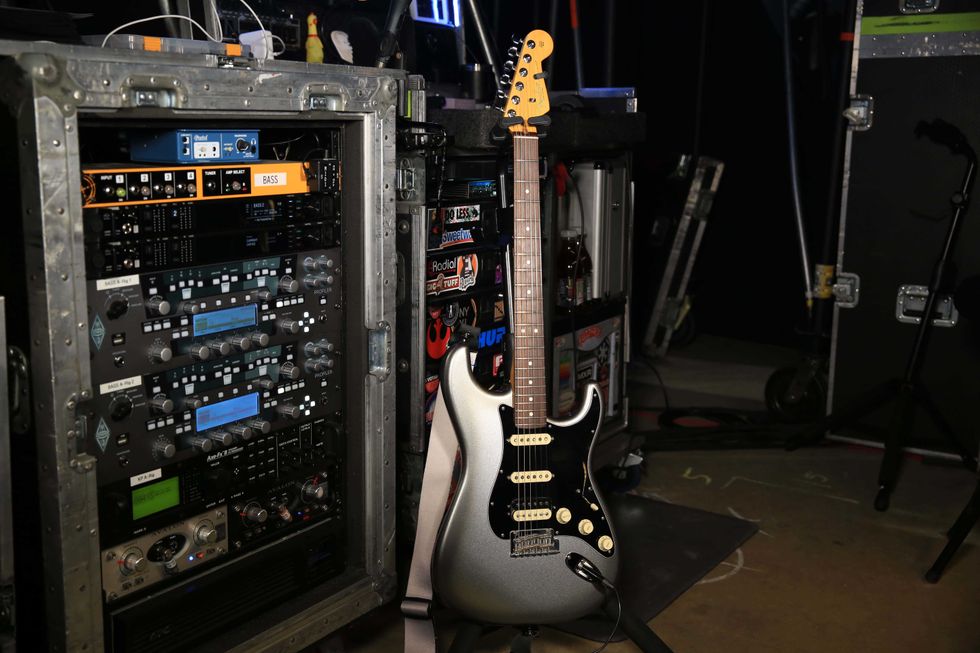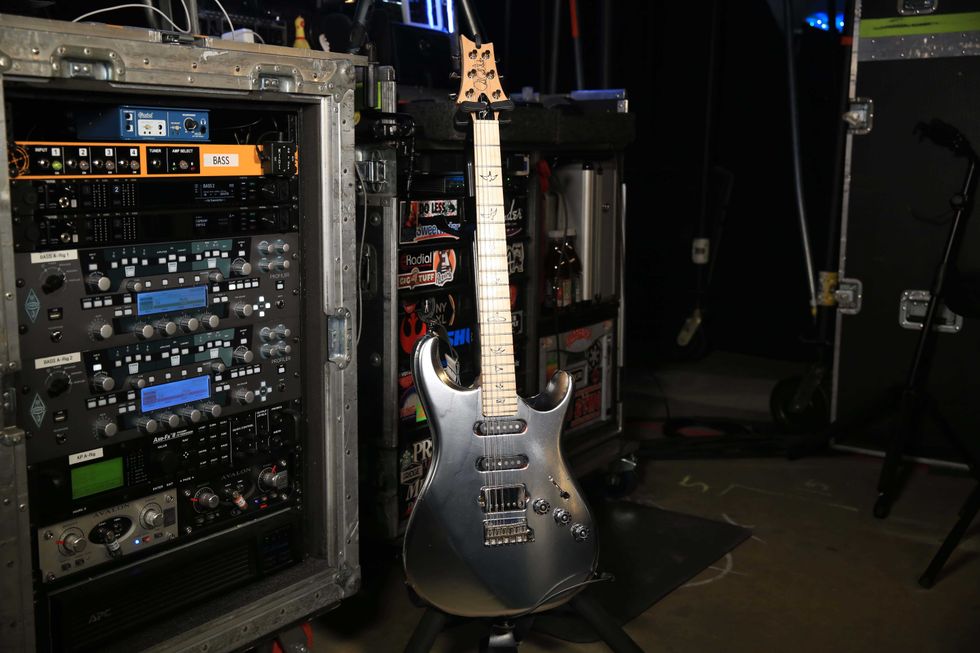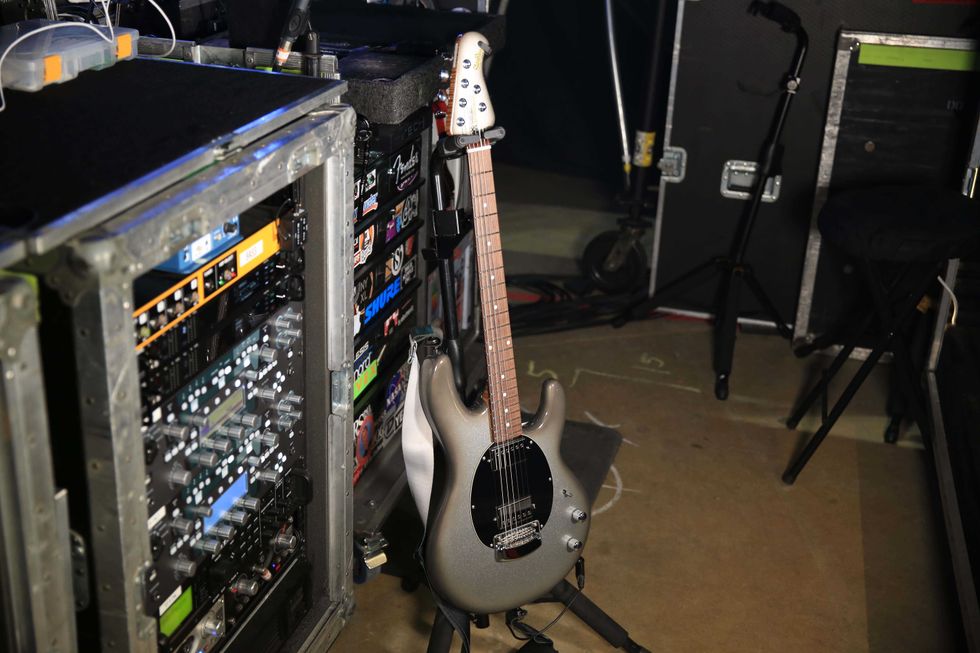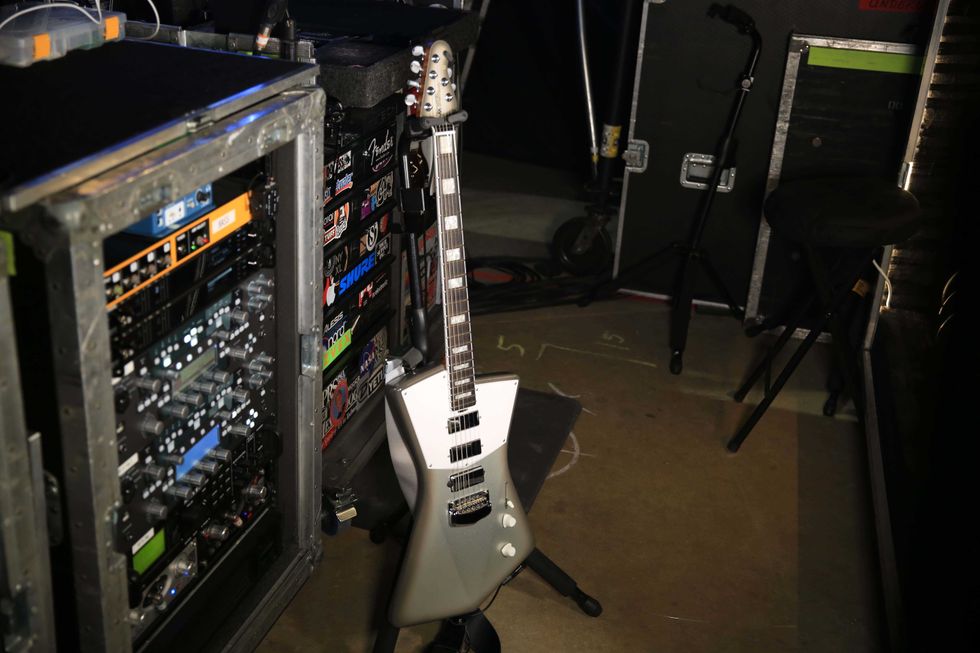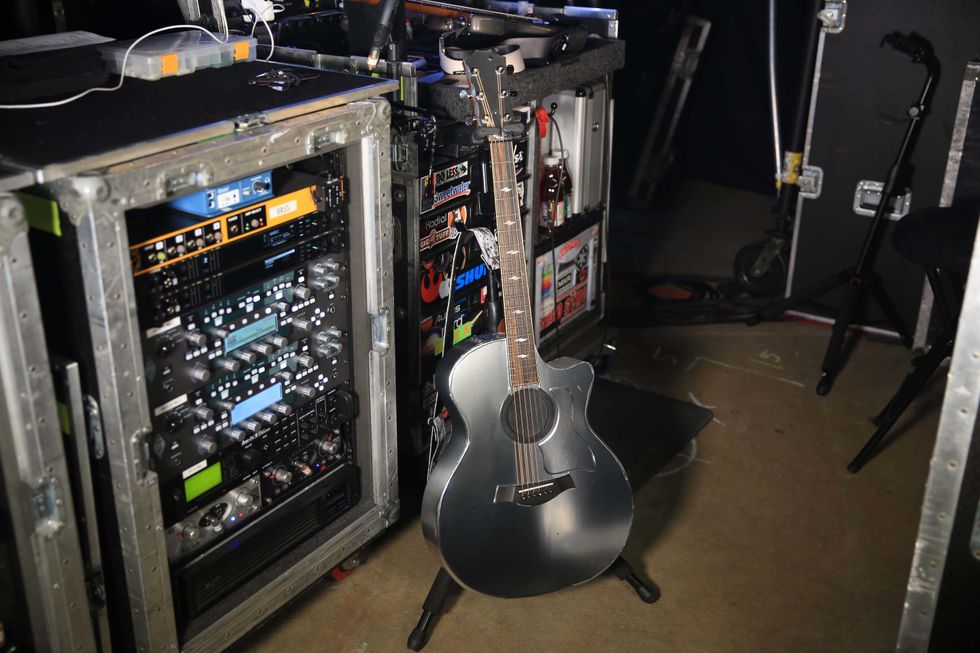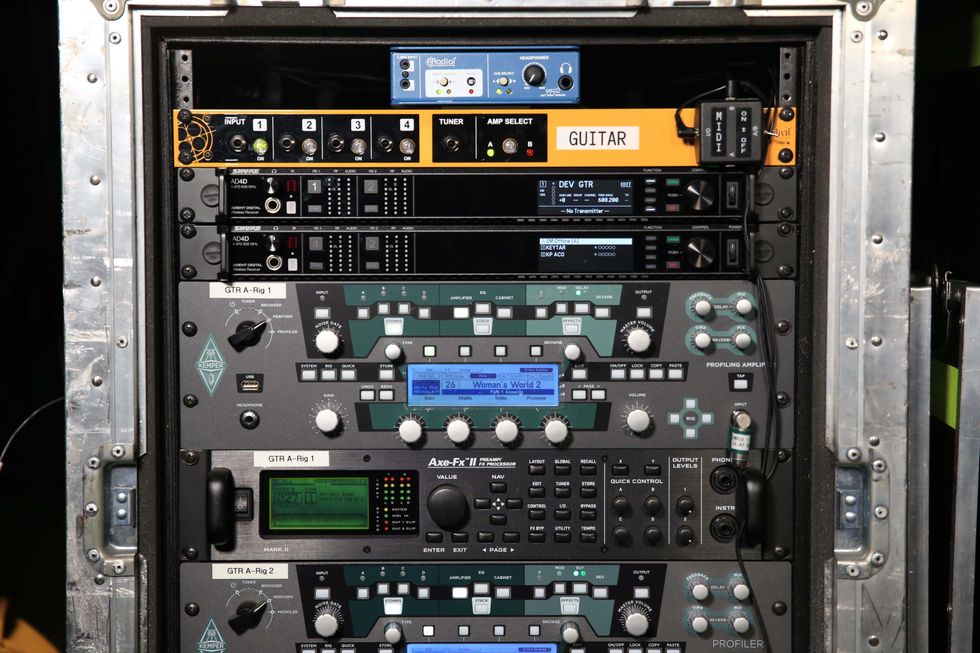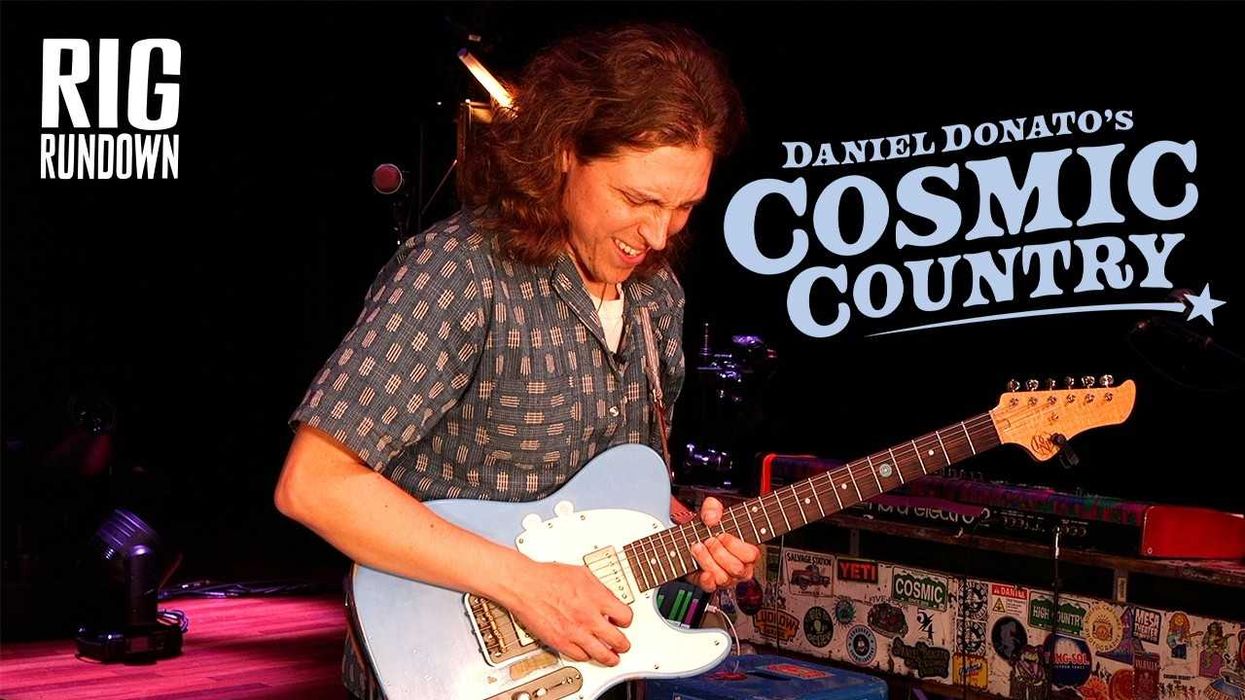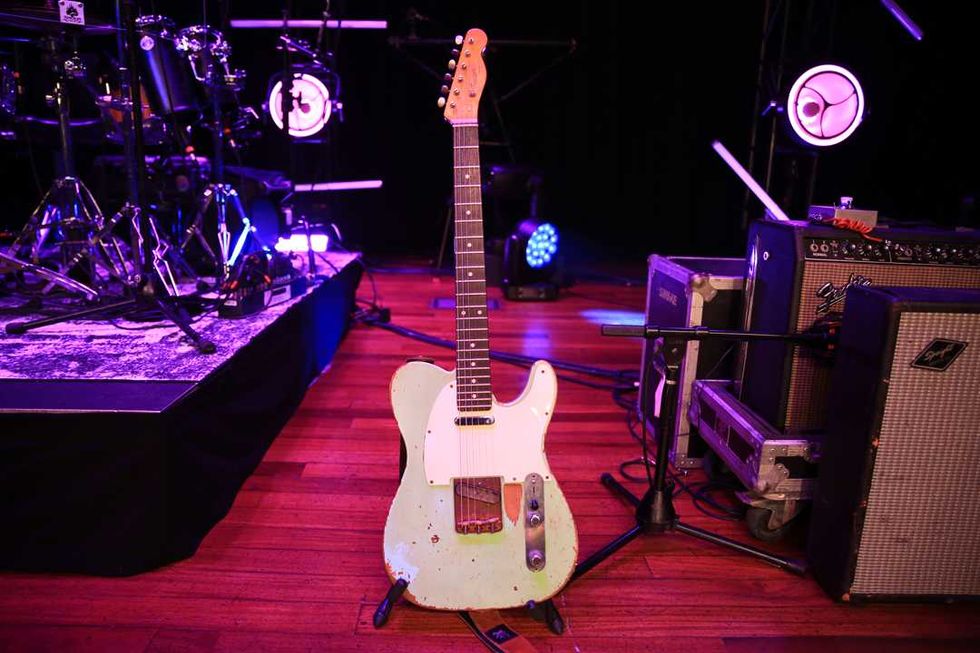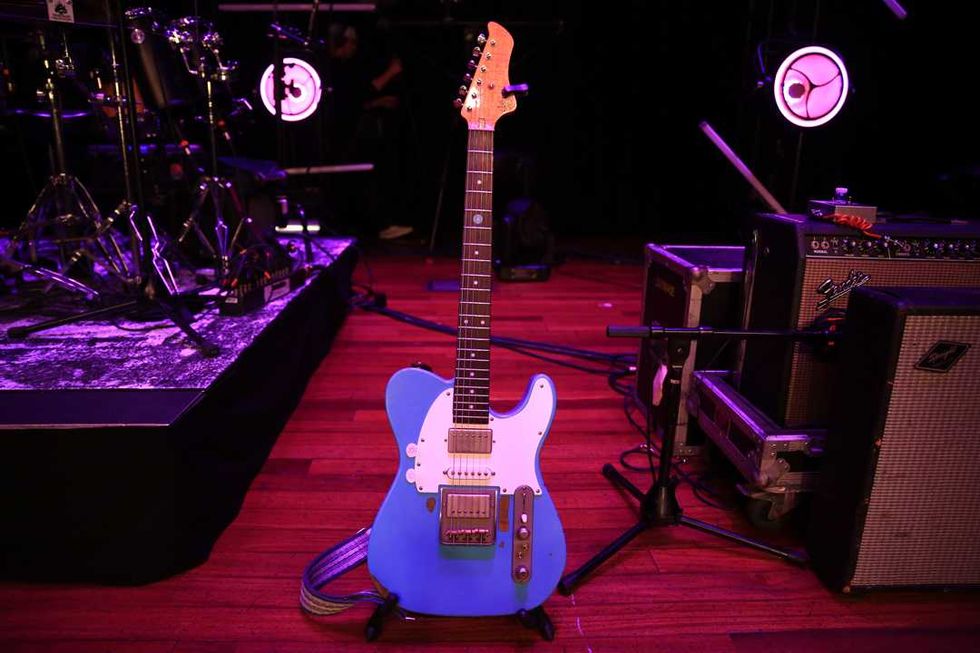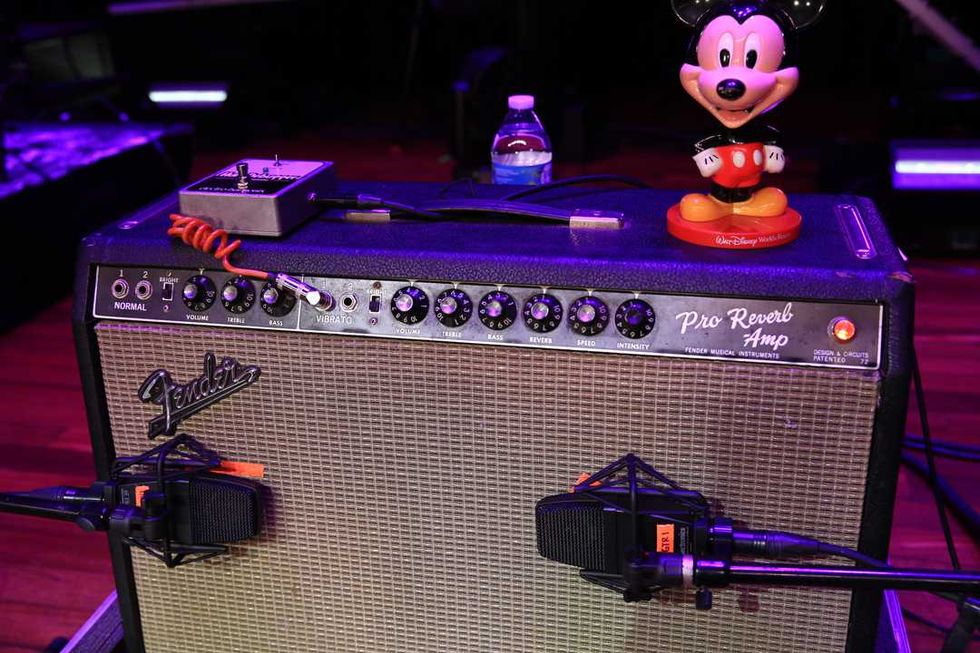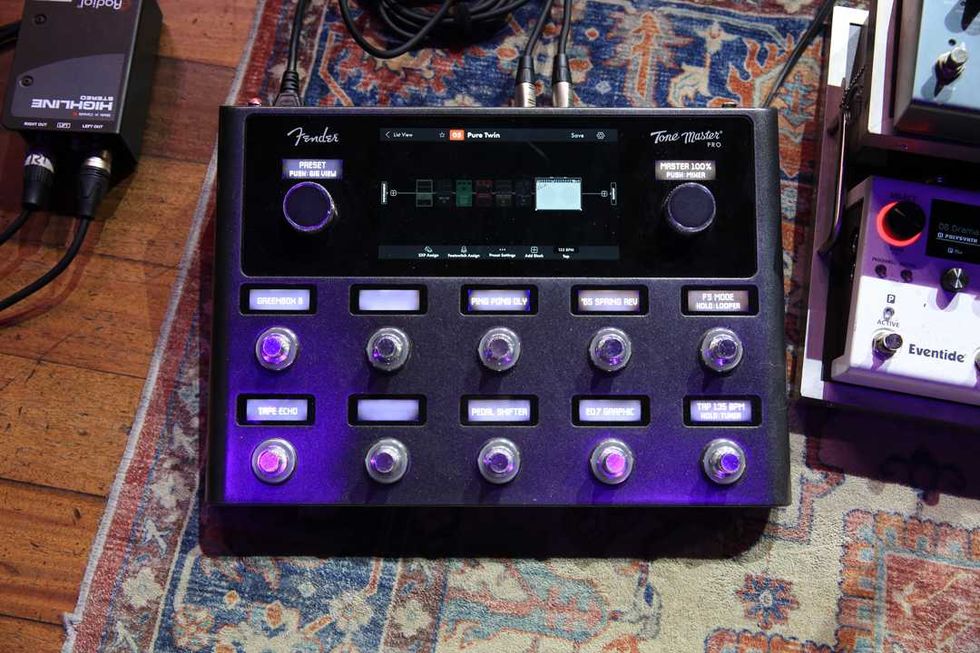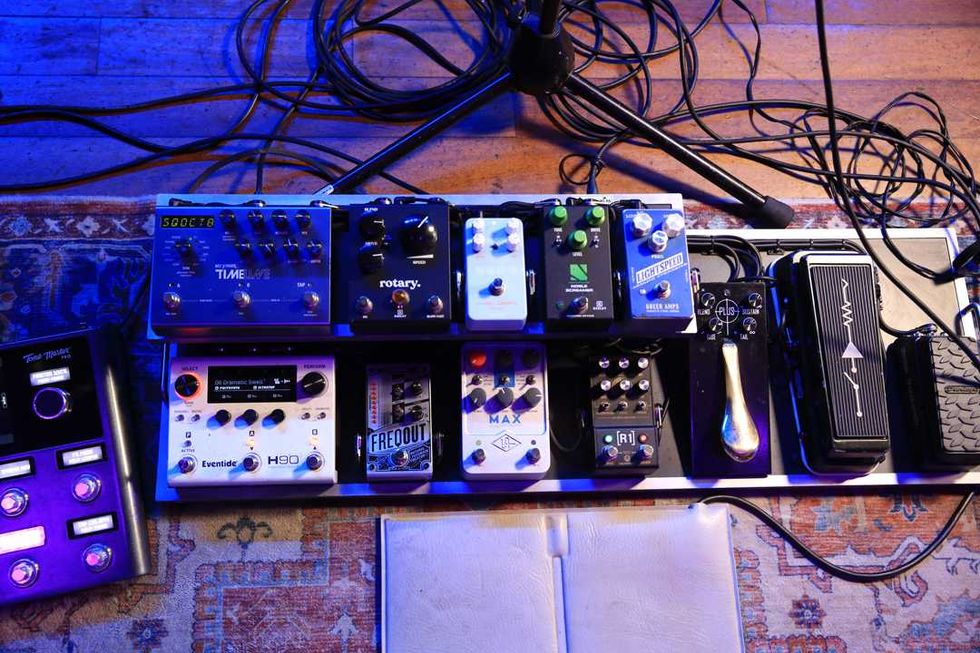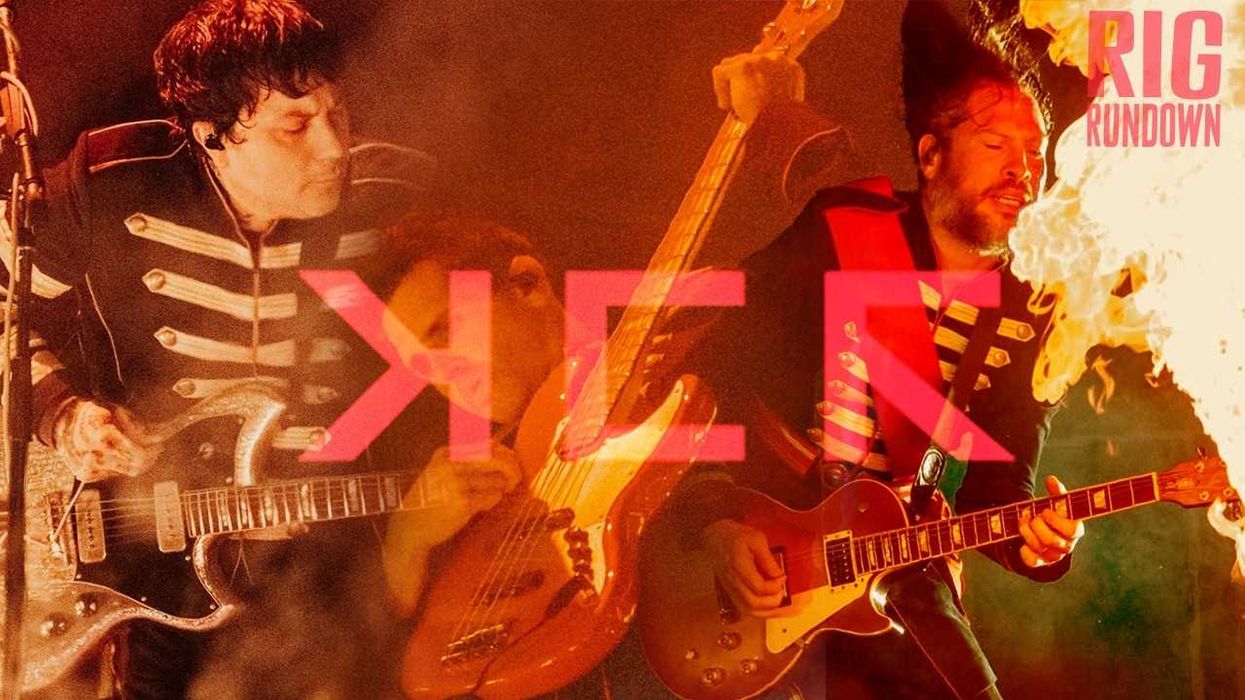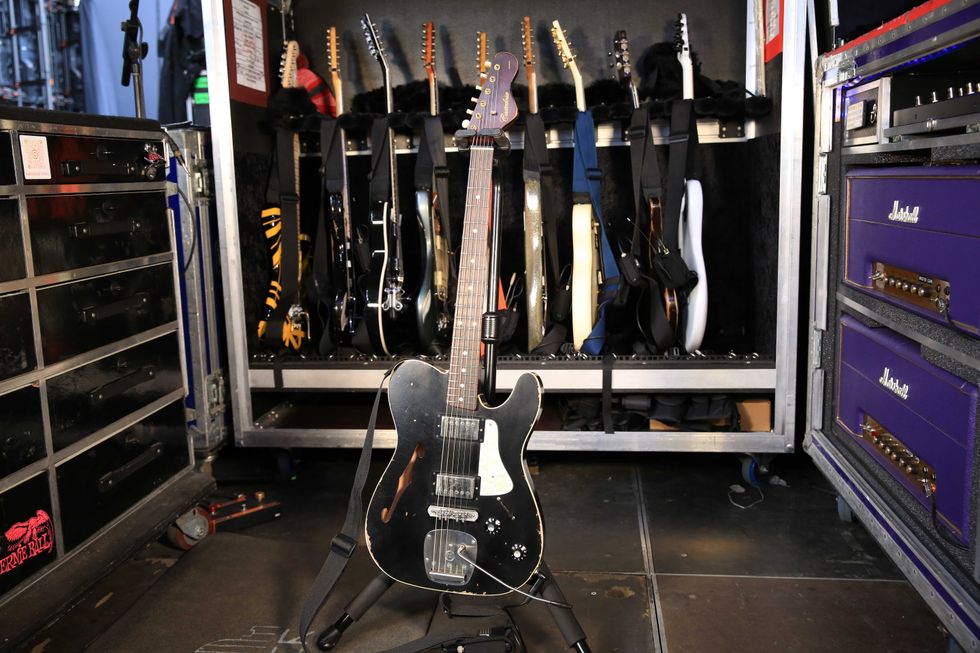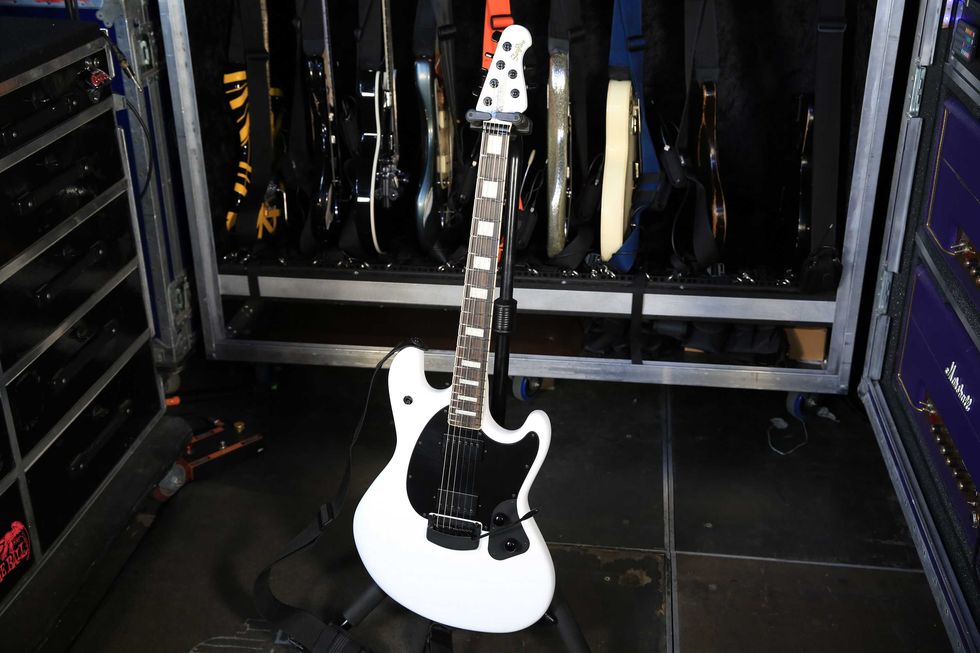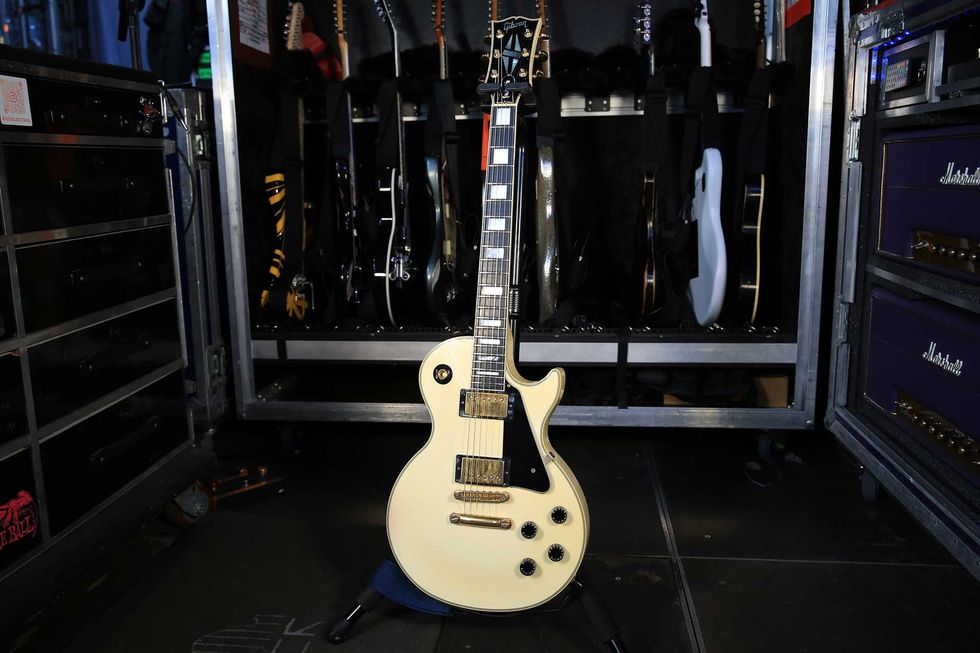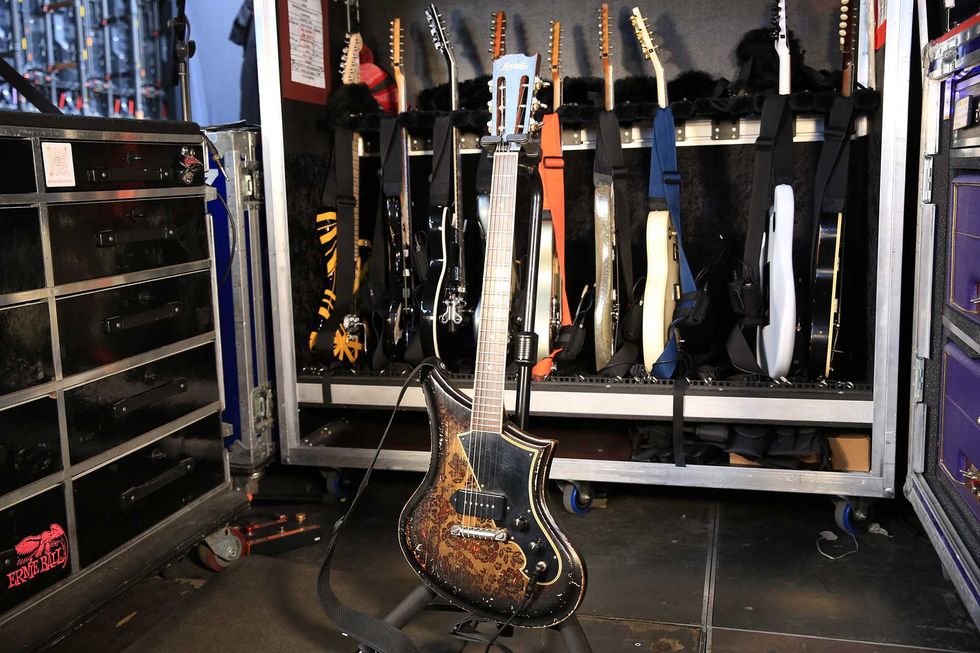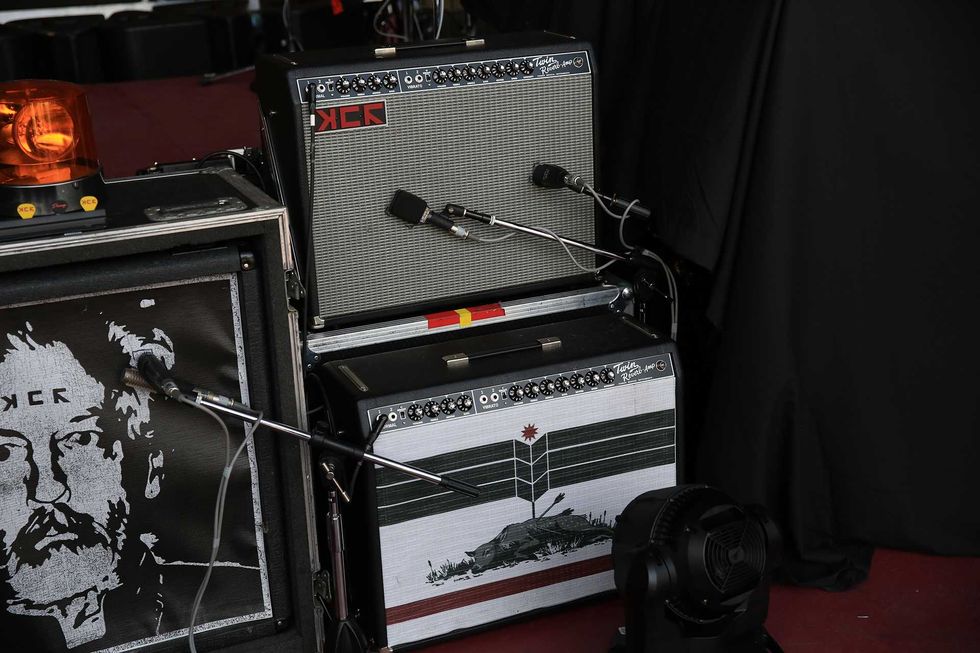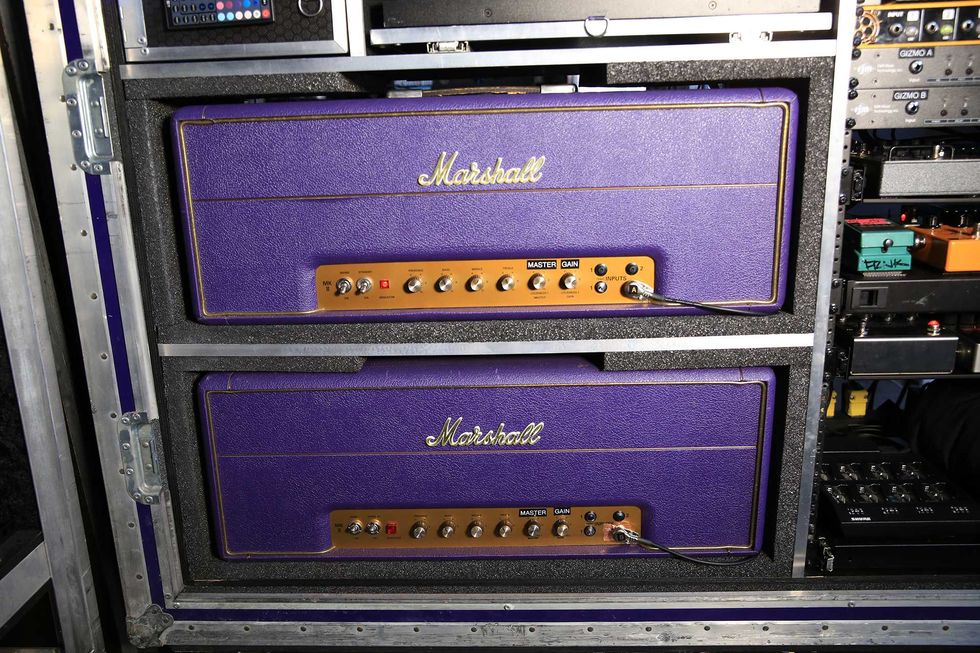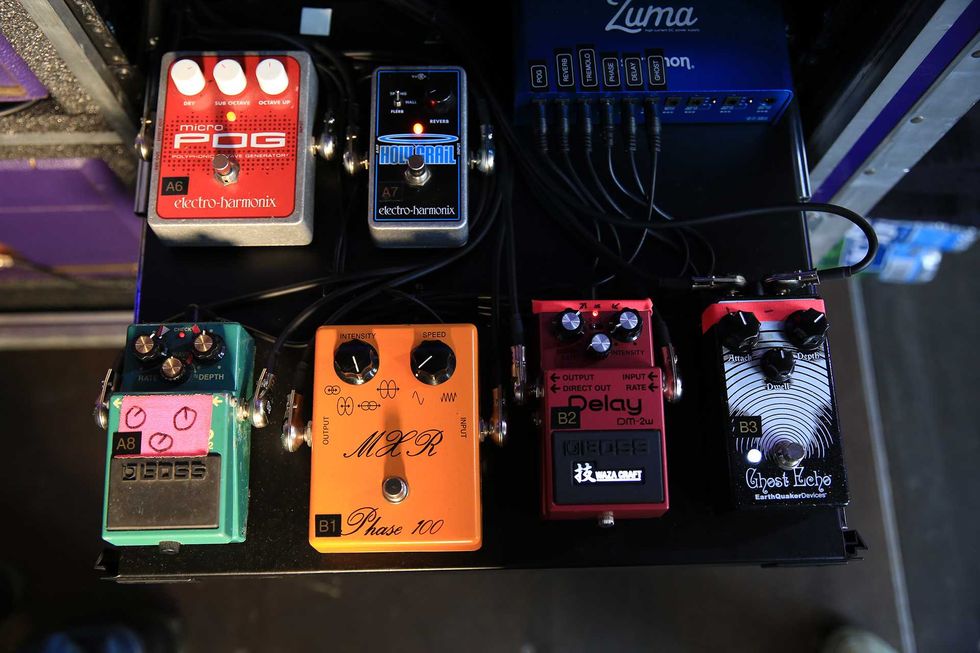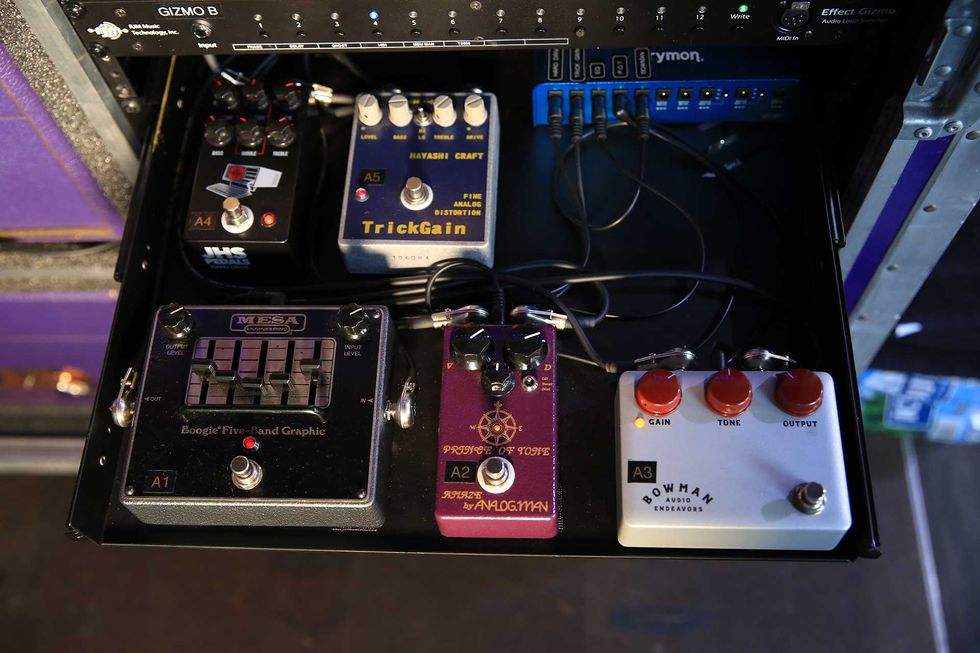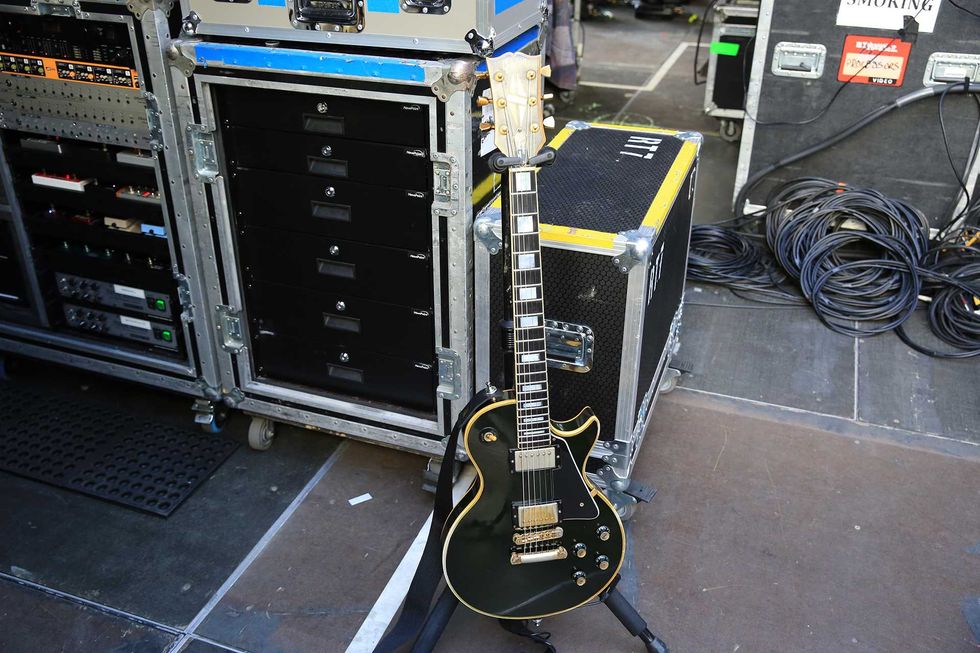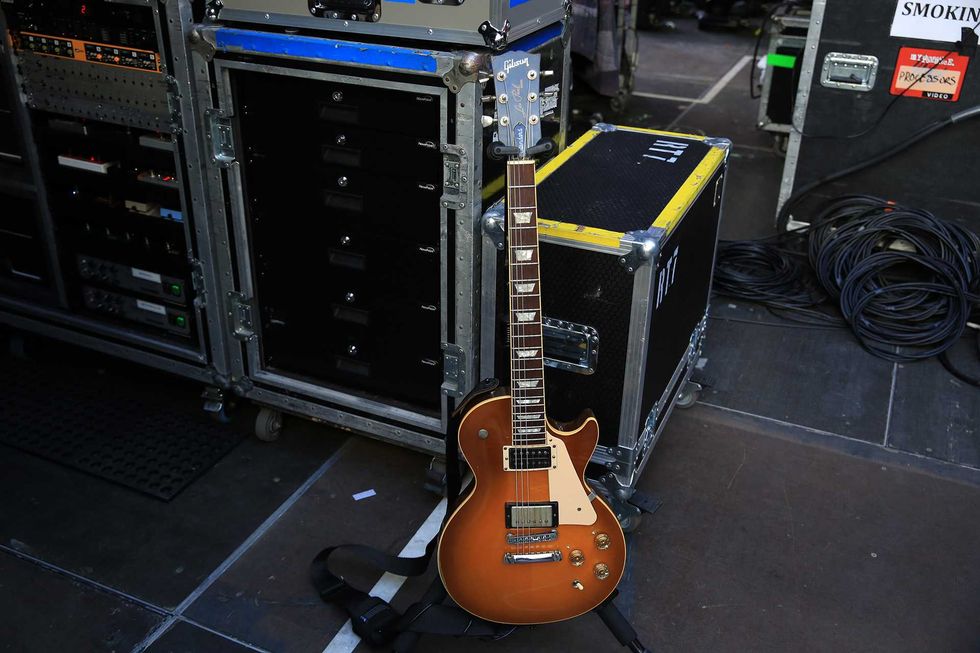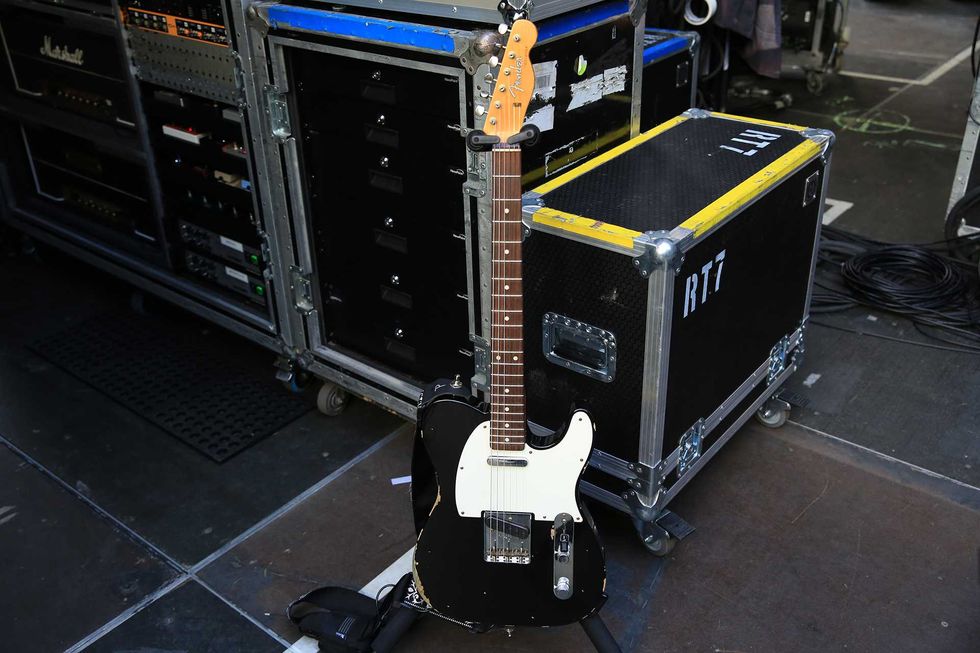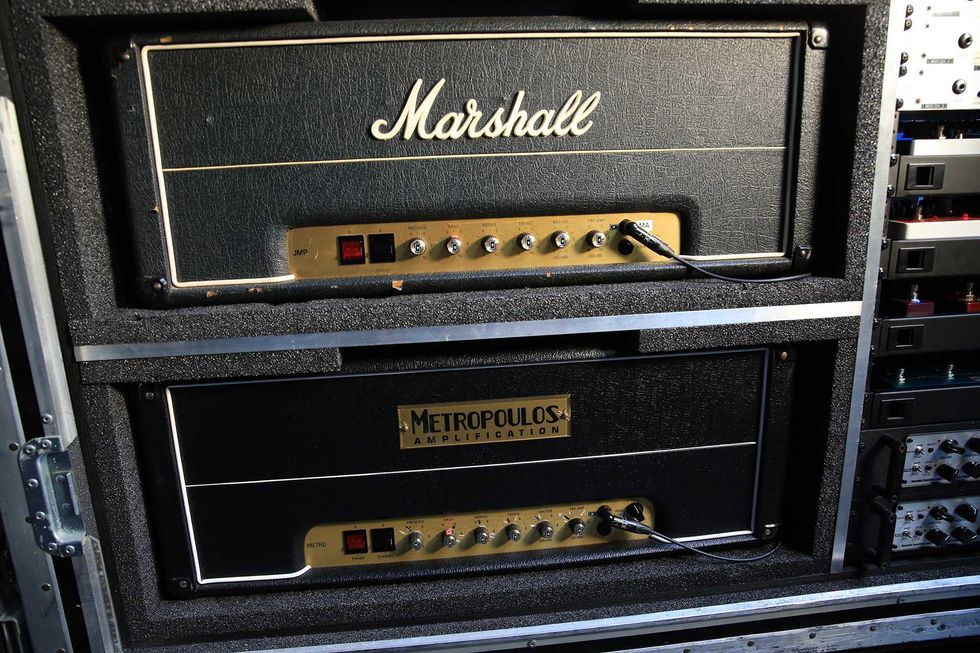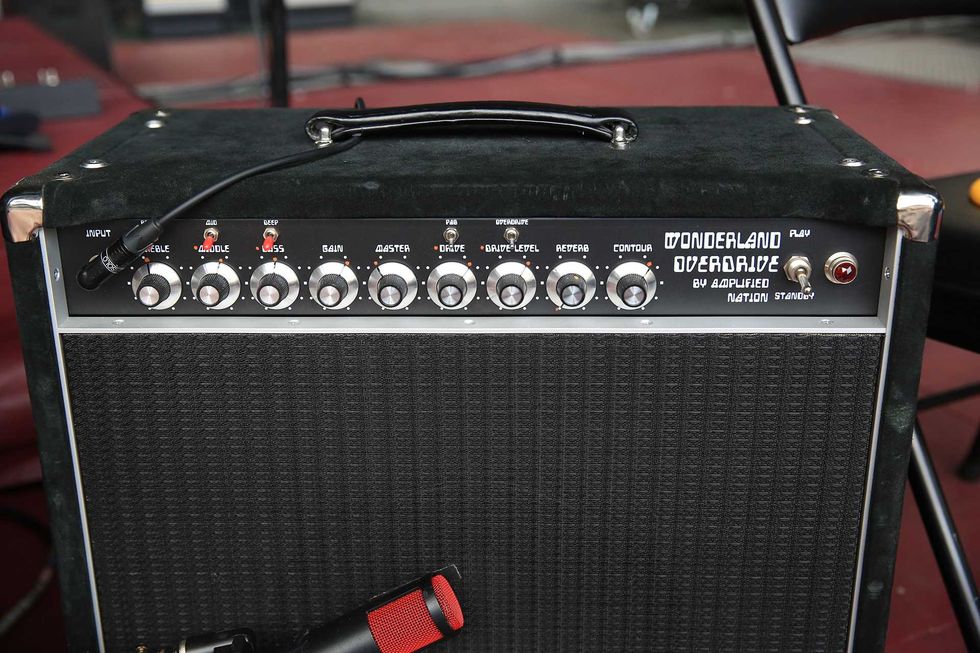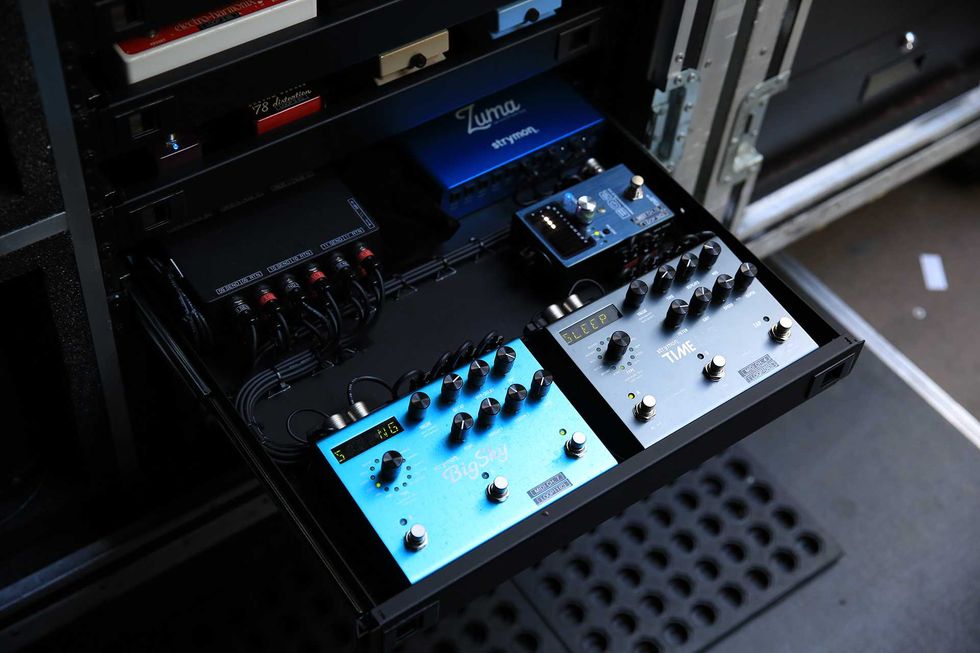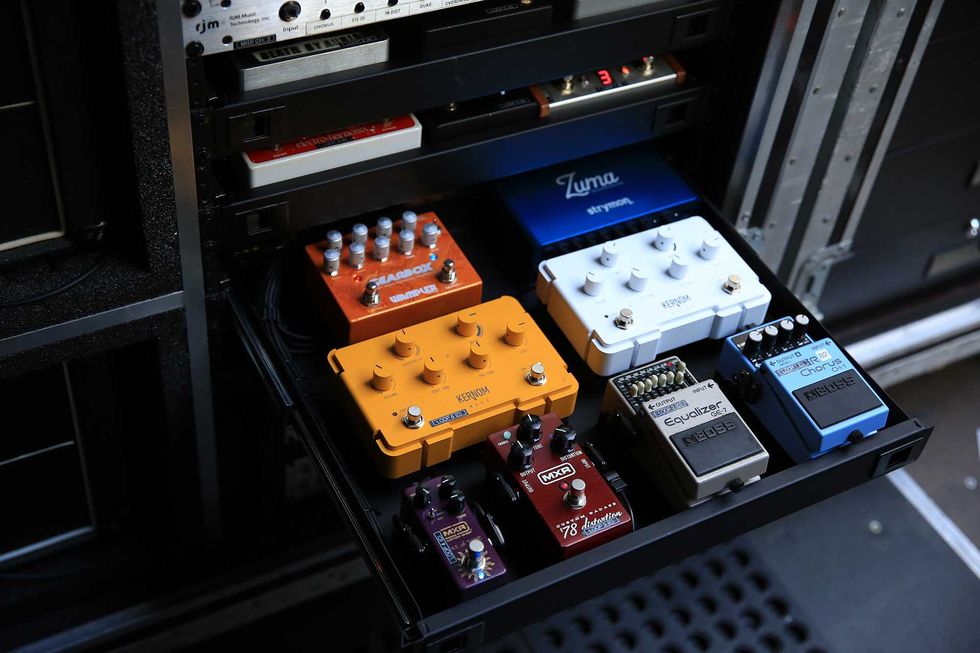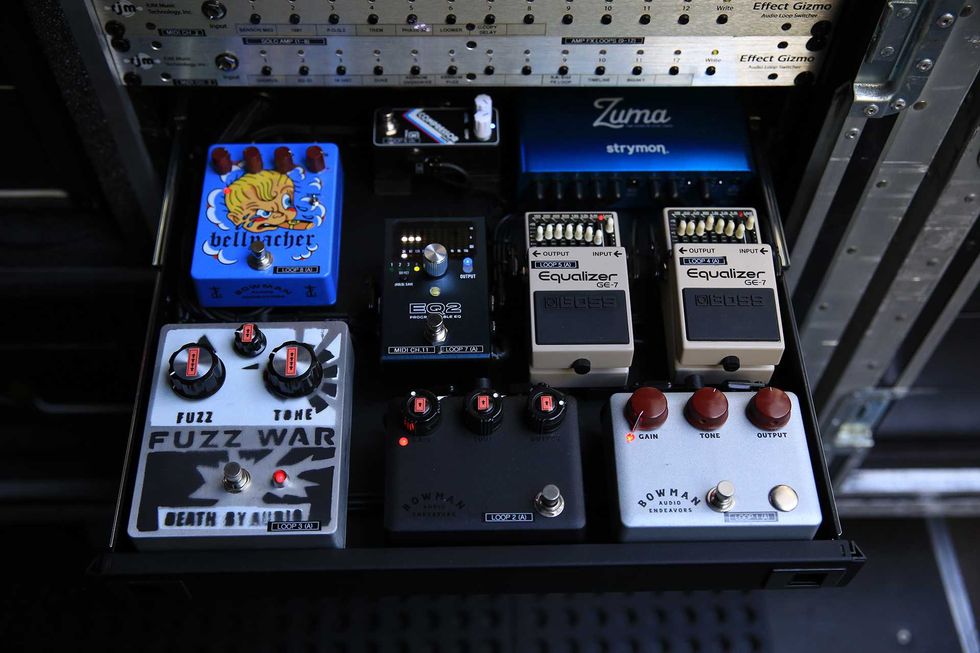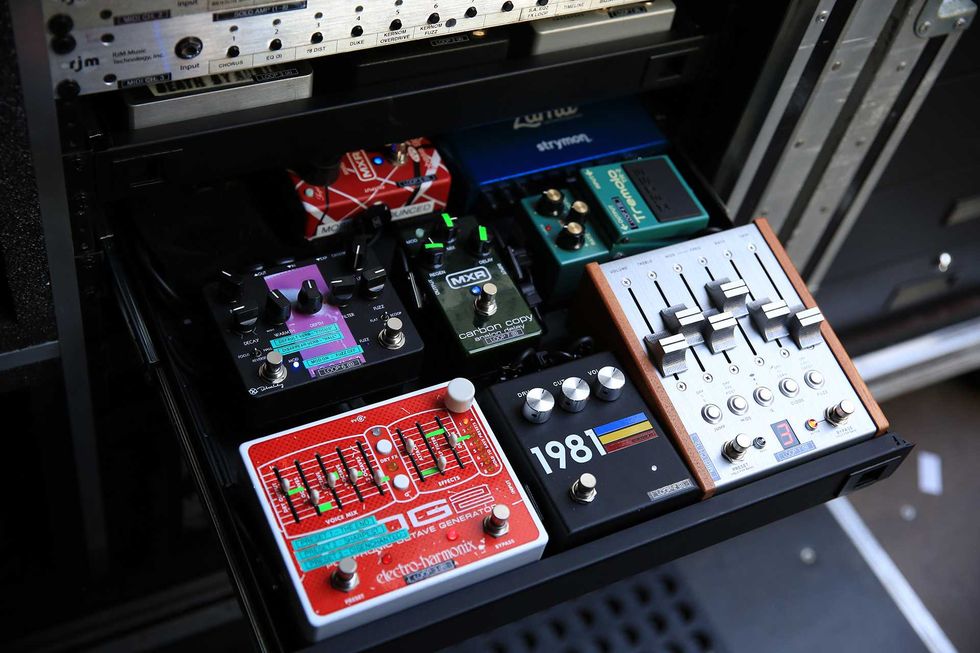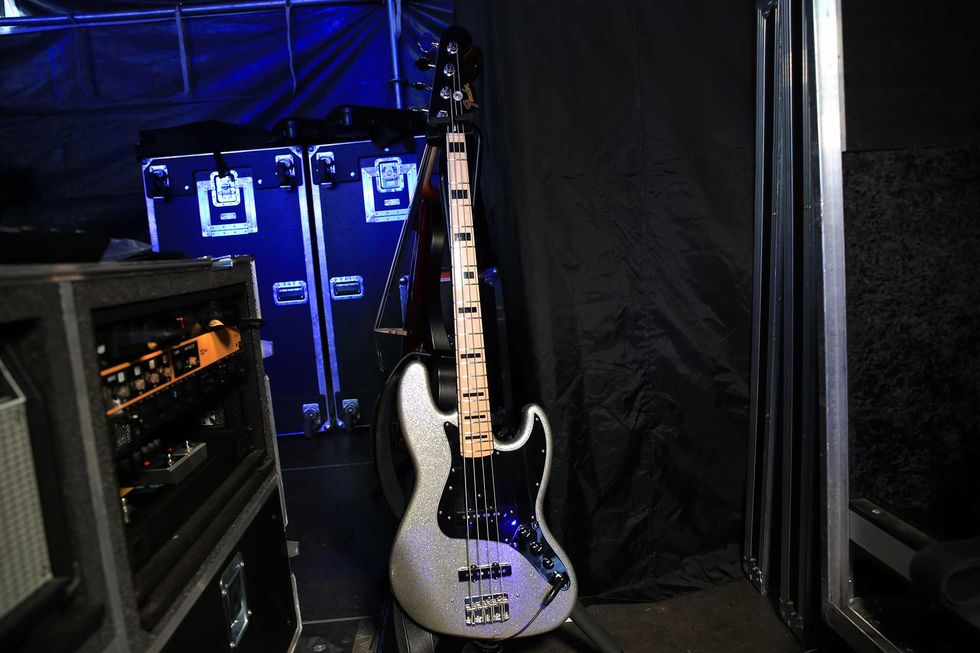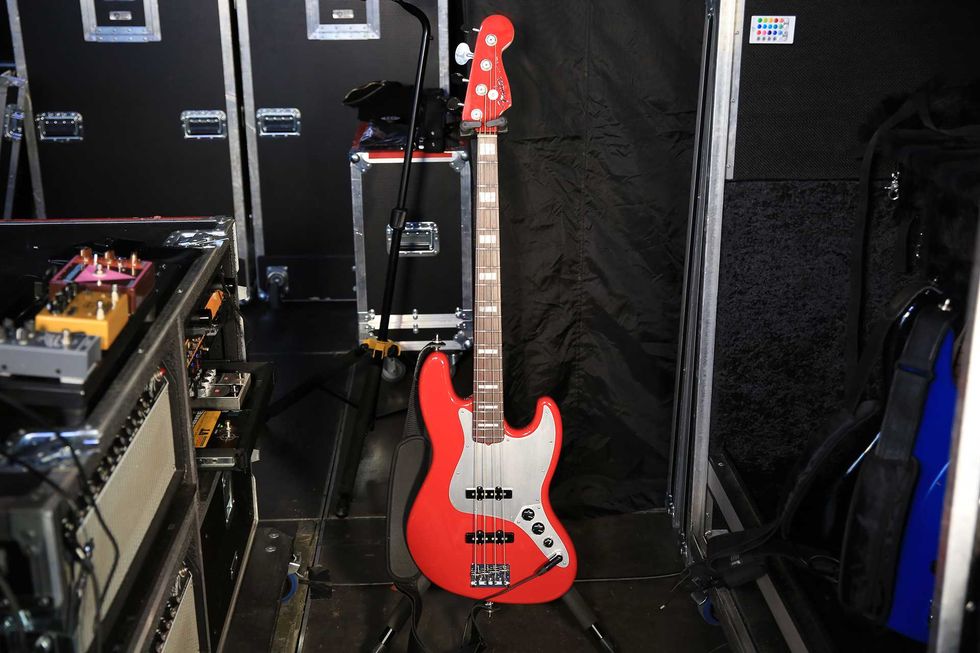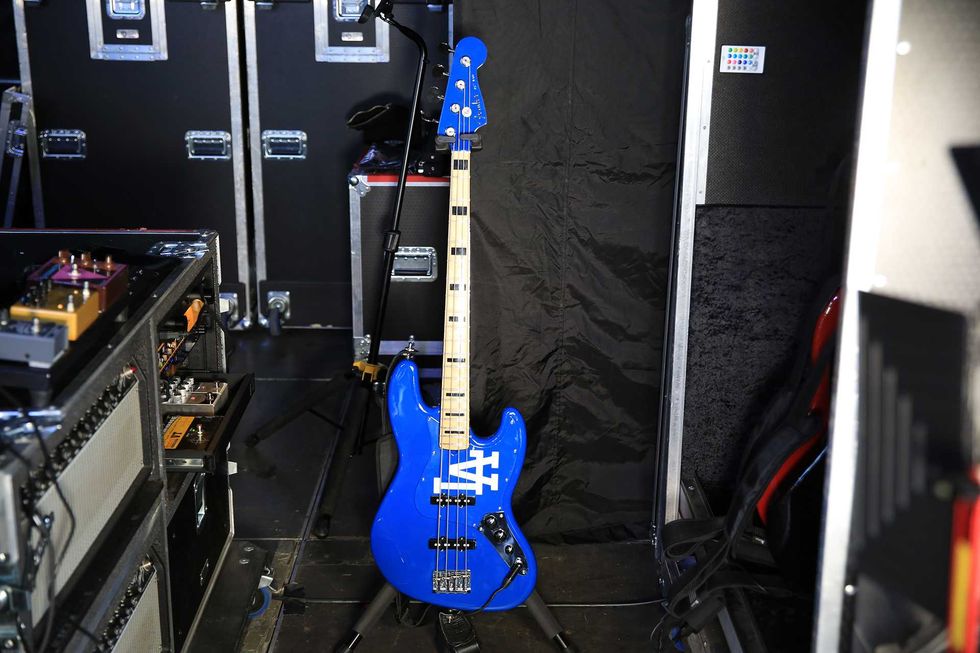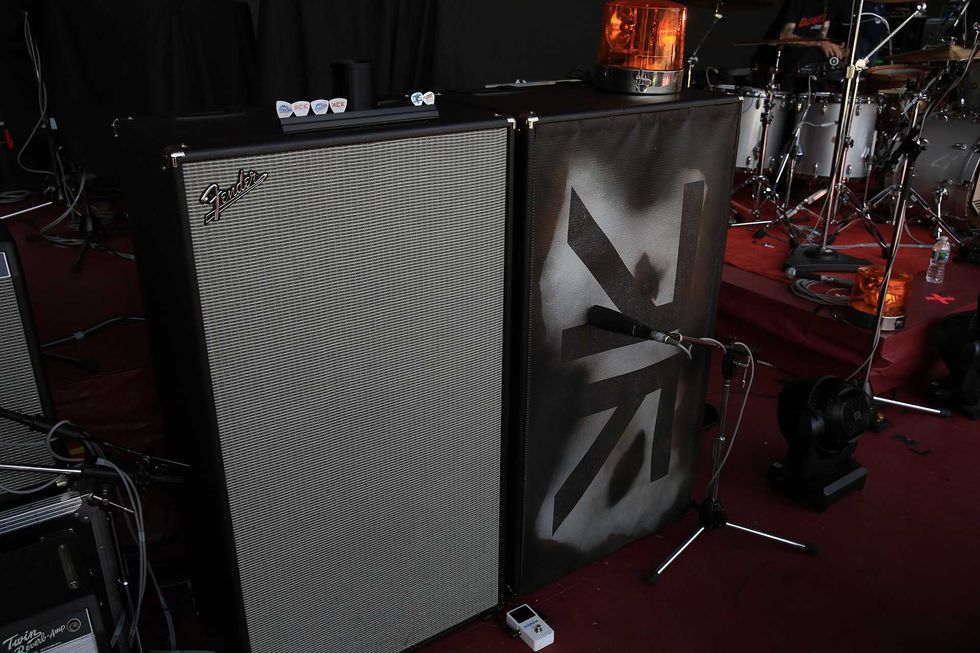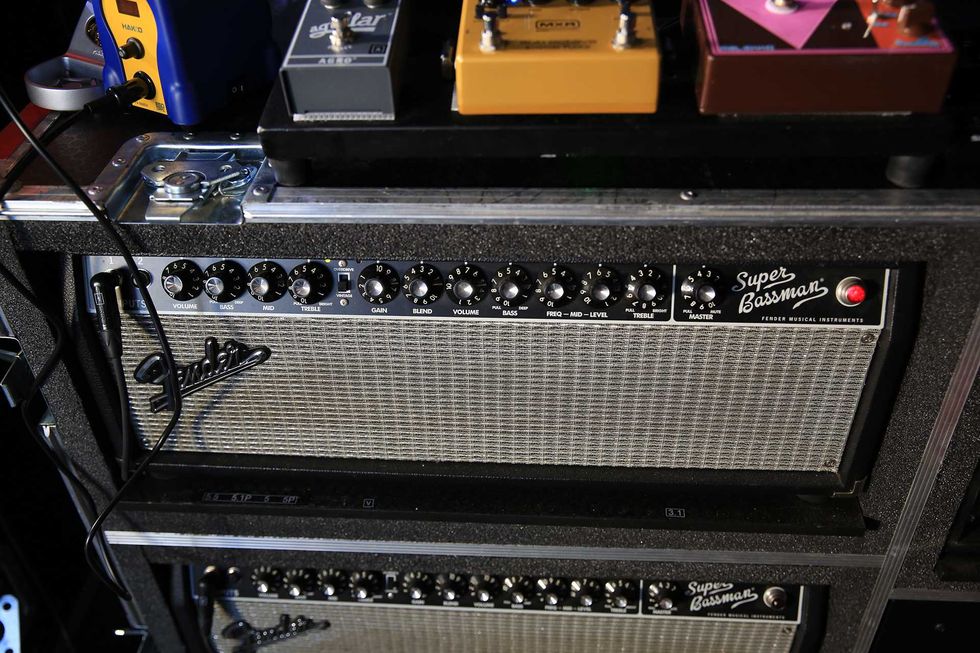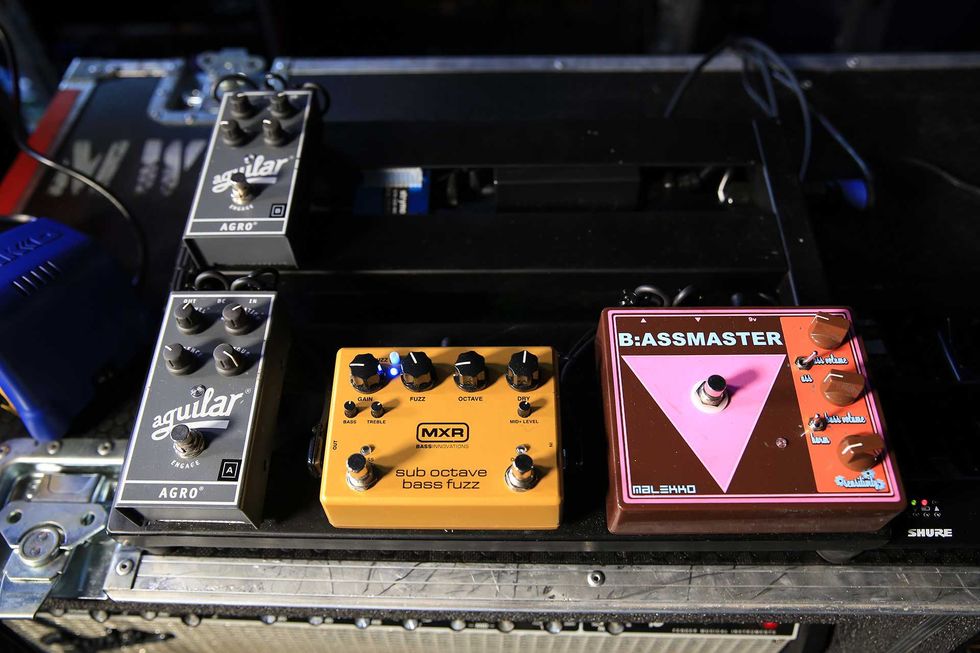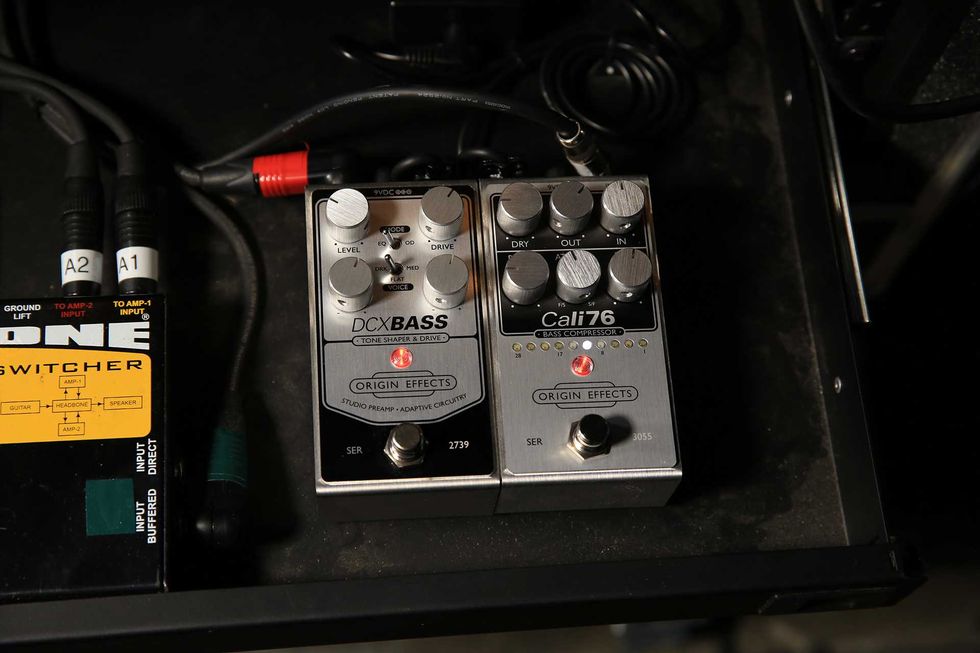“Avant-garde, jazz, pop, rock ’n’ roll ... if some aspect of the human condition comes through in the music, that’s what animates me,” Vernon Reid says about his approach to sound. “It animated me before I even picked up the instrument. And it has animated me all the way through.”
It’s this unwavering commitment to human connection over stylistic boundaries that has defined Vernon Reid’s career—and it’s perhaps never been more evident than on his new solo album, Hoodoo Telemetry. Reid is speaking to Premier Guitar from what he calls the DharmaLab, his home studio on Staten Island. The name nods to the Dharma Initiative from the TV series Lost (“I’m a big fan,” he says), and like that show’s mysterious island, the Living Colour guitarist’s musical world follows its own rules, where seemingly disparate elements meet to create something entirely new.
Hoodoo Telemetry, his first album released entirely under his own name since 1996’s Mistaken Identity, embodies this philosophy. The title itself speaks to the collection’s nature: “hoodoo” suggests mystical forces and folk magic, while “telemetry” implies the gathering of information from distant sources. “I can understand why anyone listening to it would go, ‘This is all over the place,’” Reid acknowledges. “But I’ve kind of been all over the place, really, in every context I’ve been in.”
The path to Hoodoo Telemetry began years ago, pre-Covid, but that “huge interruption” fundamentally shaped the record’s final form. During those lockdown days, Reid found himself cycling over New York bridges, taking photographs, playing guitar, and contemplating where he wanted his music to go.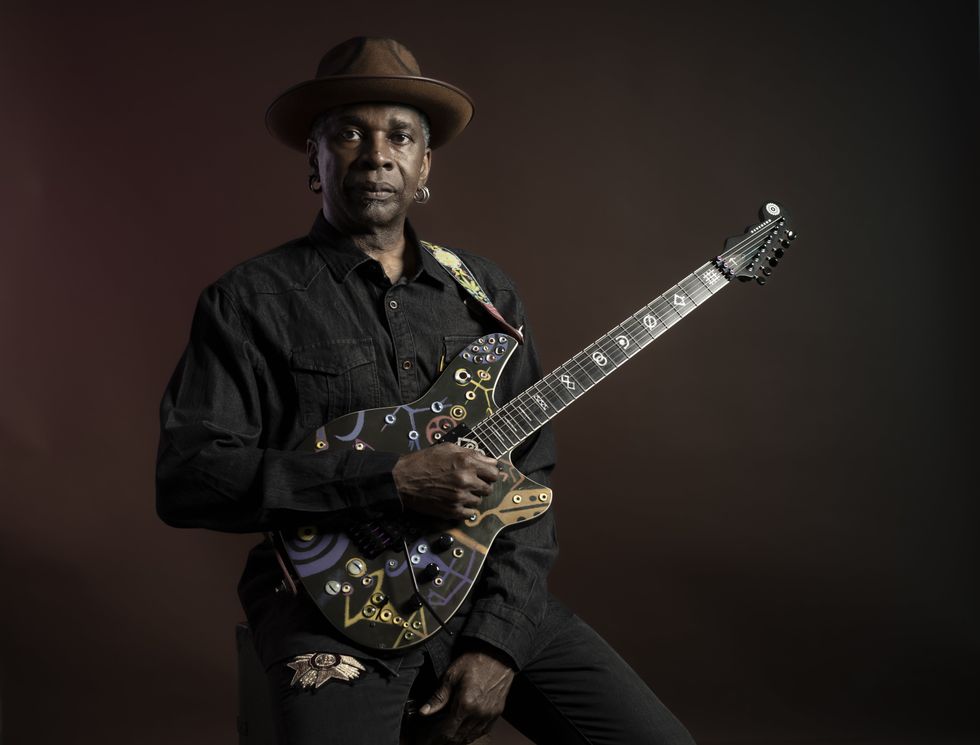
Reid poses with his Reverend signature Totem Series electric guitar in “Talisman” finish.
Justin Borucki
Then tragedy struck. Reid lost his close friend Greg Tate, the influential writer, guitarist, and critic who had been instrumental in his early career. Though Tate didn’t die from Covid directly, Reid considers him a Covid victim due to the stress the pandemic placed on the healthcare system. “We think about the victims of Covid as the people that had Covid themselves,” he says, “but there were plenty of other people that, if the healthcare system wasn’t strained by Covid, they would’ve have survived their situations.”
The loss proved pivotal. Tate had written the first serious article about Reid and his music, and the two had been co-founders of the Black Rock Coalition. Tate passed on December 7, 2021—the exact same date, Reid says, that the Black Rock Coalition held its first public event, in 1985. “It was a traumatic thing, and it sort of reframed or focused what I was doing—I wanted to make a record that Greg would like.”
Indeed, Tate’s influence permeates the album. Burnt Sugar, Tate’s experimental collective, is featured on three tracks, while Reid also says his friend encouraged him to sing more (which he does, on the track “In Effigy”). “[Greg] said, ‘Man, you have a quality to your voice,’” Reid says. “‘You have a thing,’ you know?”
There are other elements woven throughout Hoodoo Telemetry. “Part of the thread in the album is the idea of the diaspora—the idea of being adrift,” Reid says. This is reflected from the first track, “Door of No Return,” which draws on the historical term for the final passage of enslaved Africans leaving their homeland for America, to the closing number, “Brave New World,” which takes its title from Aldous Huxley’s cautionary dystopian novel. “Where’s the center, right?” he continues. “Especially when you realize the trip is a one-way trip.”
Musically, the album has an eclectic and adventurous spirit. There’s “Politician,” Reid’s take on the Cream classic. The choice reflects both personal history—Reid played the song with Jack Bruce in the band Spectrum Road—and contemporary relevance. “It’s my favorite Cream tune,” he says. The sentiment behind it, meanwhile, is “an evergreen thing,” he continues, “what with these jive so-and-sos….”
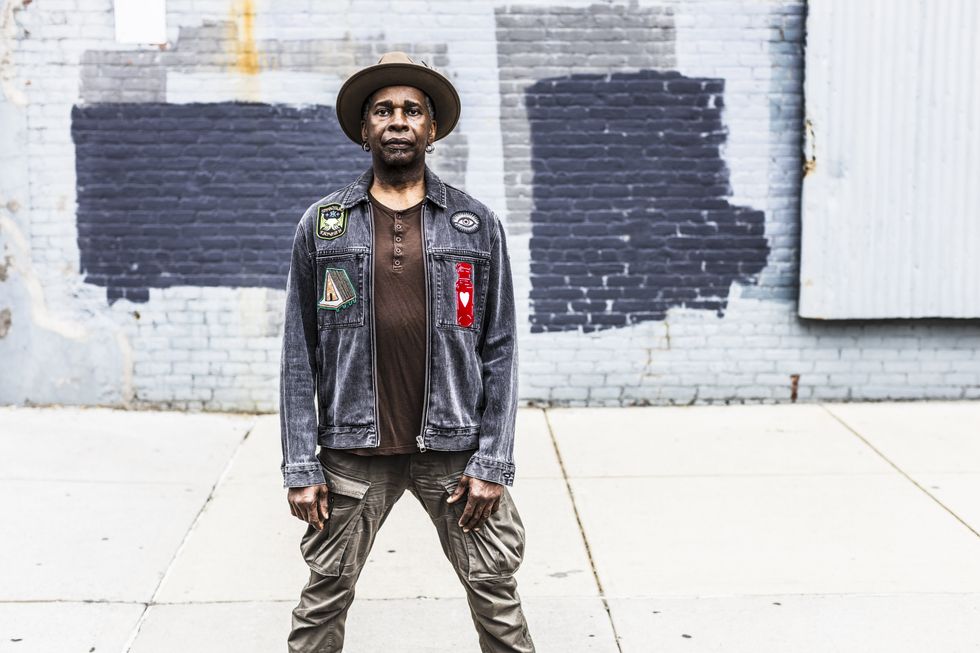
Reid says he can understand why anyone listening to Hoodoo Telemetry might feel it’s all over the place stylistically. “But I’ve kind of been all over the place in every context I’ve been in,” he says.
Justin Borucki
“Ever since I saw Clapton with The Fool, I’ve loved guitars with graphics.”
Another song, “Freedom Jazz Dance,” emerged organically during recording sessions at Super Giraffe Sound in Brooklyn. Originally planned as an instrumental, the tune transformed when Burnt Sugar vocalist Bruce Mack suggested incorporating Eddie Jefferson’s vocalese version. The result became what Reid describes as “this kind of ‘60s sci-fi version of the song.”
Perhaps most poignant is the skittering, atmospheric “Good Afternoon Everyone,” built around a found vocal recording Reid captured in the subway, where a homeless man repeated the same request with unchanging inflection: “Good afternoon, everyone. Can anybody help me with something to eat today?” What initially seemed like mere politeness revealed itself as controlled anger. “I realized, okay, he’s enraged. He’s not just being polite,” Reid says. “But his affect didn’t change. It was really chilling and really poetic.”
The track exemplifies Reid’s approach to social commentary through music. Collaborating with rapper Nironic, “Good Afternoon Everyone” explores homelessness from multiple perspectives. “One of the things [Nironic] did was that he pivoted,” Reid says. “At one point, he’s the person ignoring the homeless person, and then he flips, and he’s also the person seeking aid. I thought that was pretty cool.”
While Reid’s conceptual concerns drive much of Hoodoo Telemetry, his guitar work—the element that, of course, first brought him to prominence—remains equally compelling throughout, expertly balancing furious blasts of technical prowess with emotional expression. Reid can shred with the best of them, but he’s equally capable of restraint when the music demands it.
The contrast between tracks like “Door of No Return” and “Brave New World” illustrates this philosophy. The former demands intensity: “‘Door of No Return’ is really about a kind of feeling,” Reid says. “It’s a certain energy. It’s about loss, it’s about rage. It’s about figuring out, where do I go from here? You’re not going back home. And that requires a certain kind of approach.” Meanwhile, “Brave New World” prioritizes melodic content over flash. “That little guitar melody in the song is more important to me than the solo,” Reid says.
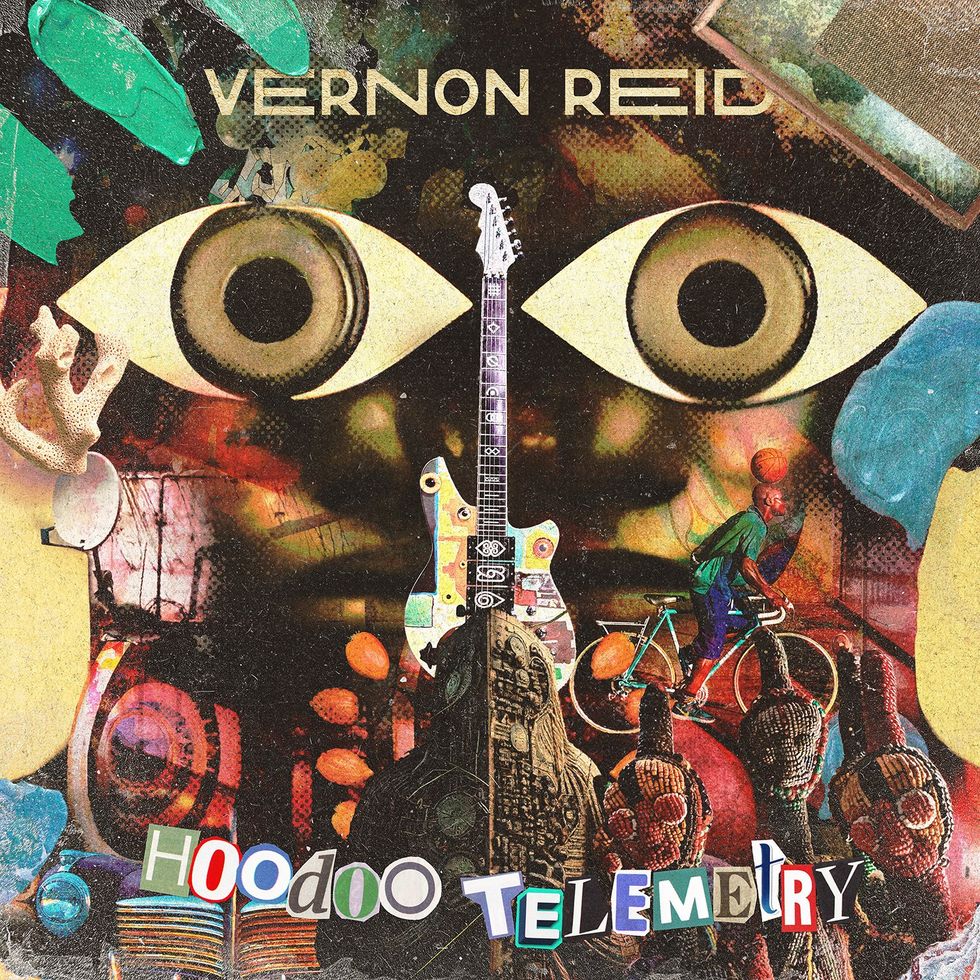
Hoodoo Telemetry is Reid’s first solo album released entirely under his own name since 1996’s Mistaken Identity.
“If you think something is impossible, there’s no way forward.”
For Reid, it’s all about understanding and serving the musical moment. “What does music mean, and what’s the right thing to do for a particular song?” he says. “There are times I can sit there and go, ‘Okay, I wanna play this, and the song could be just a vehicle.' But there’s a balance. Because, man, playing fast is thrilling. But figuring out an approach against a harmonic background, or improvising something, that’s thrilling, too. And at the same time, it has to work for the song. Something like ‘Good Afternoon Everyone,’ that’s not a song for a flash solo. It’s a song for a vibe. That’s one of the things I loved about Prince. He always got that. Because somebody like that, you can do whatever. But the question is, why?”
“Meditation on the Last Time I Saw Arthur Rhames” serves as perhaps the album’s most personal statement (as well as a vessel for some of Reid’s wildest, most thrilling lead playing), honoring the avant-garde New York City-based musician who profoundly influenced Reid’s understanding of guitar possibilities. “Arthur Rhames used to play stuff at Prospect Park [in Brooklyn],” Reid says. “And it was only when I heard Allan Holdsworth that I said, ‘Oh, that reminds me of what this guy in Brooklyn used to do.” The track combines blues elements with modal, Coltrane-influenced improvisation, “and there’s also influence from Sonny Sharrock and Pete Cosey, especially when he was playing with Miles [Davis], doing that super psychedelic, heavy, mysterious thing,” Reid says. “One of the things I love about Miles in that period is he wasn’t trying to explain. He was like, ‘You either got it or you ain’t get it.’”
When it comes to the actual guitars on the record, Reid points out that the recording of Hoodoo Telemetry mostly predates the arrival of his current signature Reverend model, drawing instead from his extensive collection of instruments accumulated over the years. “Some of the stuff is my old Hamers,” he notes, referencing his custom Chaparral and the model he calls “Yin-Yang,” which appeared on multiple tracks. He also utilized his signature PRS S2 VR Vela, a Gibson ES-345, and a Stephen McSwain guitar with an aluminum flag top design that he nicknamed “Tuskegee.”
That said, his Reverend signature model does make appearances, notably on tracks like “In Effigy” and “Brave New World,” which were recorded more recently. The Reverend features his preferred V-shaped neck profile, a specification he’s maintained since his ESP days, as well as a trio of custom Railhammer humbuckers that he says are “pretty amazing for the way they take to overdrive and distortion.” Visually, the guitar reflects Reid’s affinity for striking graphics. There’s symbology inspired by the likes of Carl Jung, Joseph Campbell, and Jean-Michel Basquiat imprinted on the body, inlays in the shape of “hobo signs,” and pickup covers sporting African Adinkra symbols. “I wanted to put together something that was almost like an outsider art-type project,” Reid says. “And when we were coming up with the images and designs for it, what we wound up at was, why don’t we just do it as a series?”
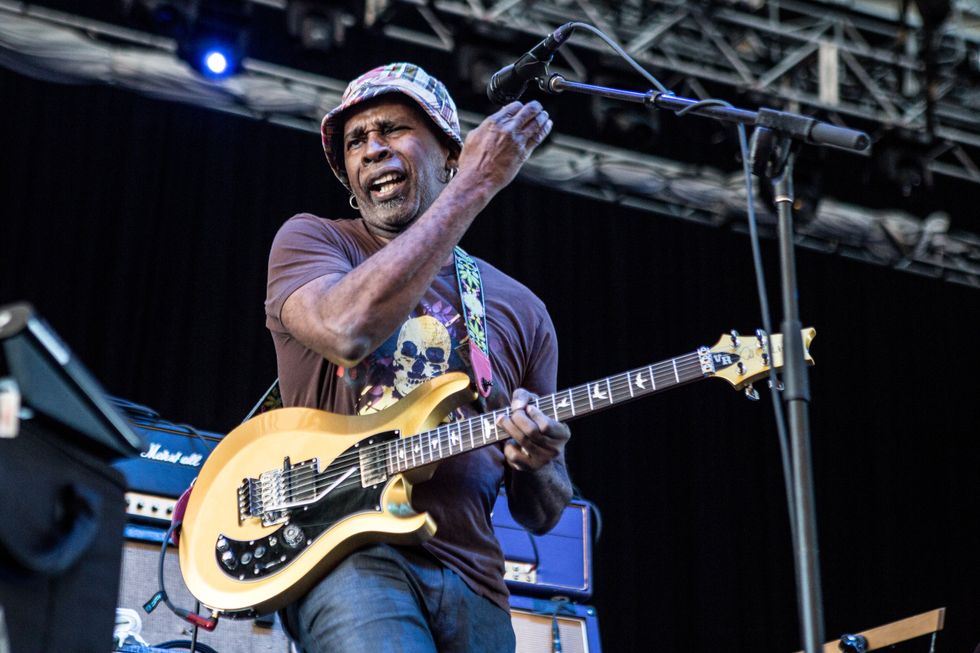
Reid hits the note onstage with Living Colour in Boston in 2016.
Tim Bugbee
The collaboration with Reverend, which is known as the Totem Series, embodies his lifelong appreciation for guitars as visual art. “Ever since I saw Clapton with The Fool, I’ve loved guitars with graphics,” Reid says. “And I always loved stickering guitars. Because they are a canvas, you know?” And not just for him: “I recently ran into Jack White at Memphis Airport, and we wound up trading signature models,” Reid recalls. “I gave him a [Reverend Totem Series] Mystery Tramp, and he gave me a [Fender] Triplecaster. And then he did the same thing with Kirk Hammett—they traded signature guitars. I think it’s really nice when that can happen between players.”
Like Hammett and White, Reid is an iconic figure in the rock-guitar world. But if his success with Living Colour seems almost paradoxical given his deep roots—and experience—in jazz, experimental, and avant-garde music, he sees it as part of a natural continuum shaped by early exposure to diverse music. “My folks, they never told me what music I should or shouldn’t listen to,” he says. “The only thing they said to me was, ‘Turn it down—it’s loud!’ But they never said, ‘Don’t listen to that.’ I was never policed.”
Growing up in New York City also helped. Reid recalls going to “Music Row”—the stretch of 48th St. in Manhattan that for decades was home to famed gear outposts like Manny’s and Sam Ash—and rubbing elbows with the likes of Leon Russell, Mark Knopfler, and George Benson. “You would just see these guys walking around, and that made impossible things seem not completely unattainable,” he says.
Vernon Reid’s Hoodoo Telemetry Gear
Guitars:
Reverend Vernon Reid Totem Series “Mystery Tramp”
’90s-era Hamer Custom Chaparrals, including “Yin-Yang” model
Hamer DuoTone
Parker Fly VR Dragonfly prototype
PRS McCarty Semi-hollow
PRS S2 VR Vela signature
Gibson ES-345
Stephen McSwain electric
Don Musser concert acoustic
Eko 6-string banjo
Amplifiers
Mesa Boogie Dual w/ Mesa cabinet
Laney Ironheart
Fender Twin
Kemper Profiler
Effects:
Line 6 Helix and Helix Floor
Line 6 POD Go
Eventide H9, H90, Rose
Chase Bliss Warped Vinyl HiFi, Generation Loss, and MOOD
Red Panda Tensor and Particle
Digitech XP-300 Space Station, FreqOut, Whammy Ricochet, and DOD Mini Expression
Alexander Pedals Super Neo-Matic
Source Audio Nemesis and Collider
Mission Engineering Expressionator
Roland VG-99
Boss SY-300 Guitar Synthesizer
Software
Ableton Live
Pro Tools
Native Instrument Guitar Rig
“Playing fast is thrilling. But figuring out an approach against a harmonic background, or improvising something, that’s thrilling, too.”
New York was instrumental to Living Colour’s development as well. “Living Colour happened because of CBGB,” he says. “Without CBGB, we wouldn’t have built our local following. And that also goes for the Ritz, the Cat Club, the Mudd Club, all these places. Living Colour wouldn’t have happened without me playing with Ronald Shannon Jackson and the Decoding Society,” he says of his time with the downtown avant-jazz collective. “And the reason why it wouldn’t have happened is because, from that, I learned it’s possible. That’s it. That’s the whole point. Because if you think something is impossible, there’s no way forward. I mean, nobody should play the lottery, right? Nobody should play Powerball. Logically, it’s a fool’s errand. Except for the fact that people win, right?”
That notion of possibility against the odds is what drives Reid’s continuing musical evolution. Even as he unleashes Hoodoo Telemetry, he’s assembling “a small but mighty ensemble” featuring longtime collaborators Leon Gruenbaum on keyboards and Steve Jenkins on bass for upcoming shows, including a performance at the Blue Note in New York City. And then there’s a new Living Colour record on the horizon, which, Reid says, “We’ve been in the process of writing,” as well as the possibility of performing music from his solo albums, stretching from Hoodoo Telemetry all the way back to Mistaken Identity. “It would be really fun to do that with the band,” he says. “And I’m excited about all of it. I’ve just gotta thread the needle, and away we go.”
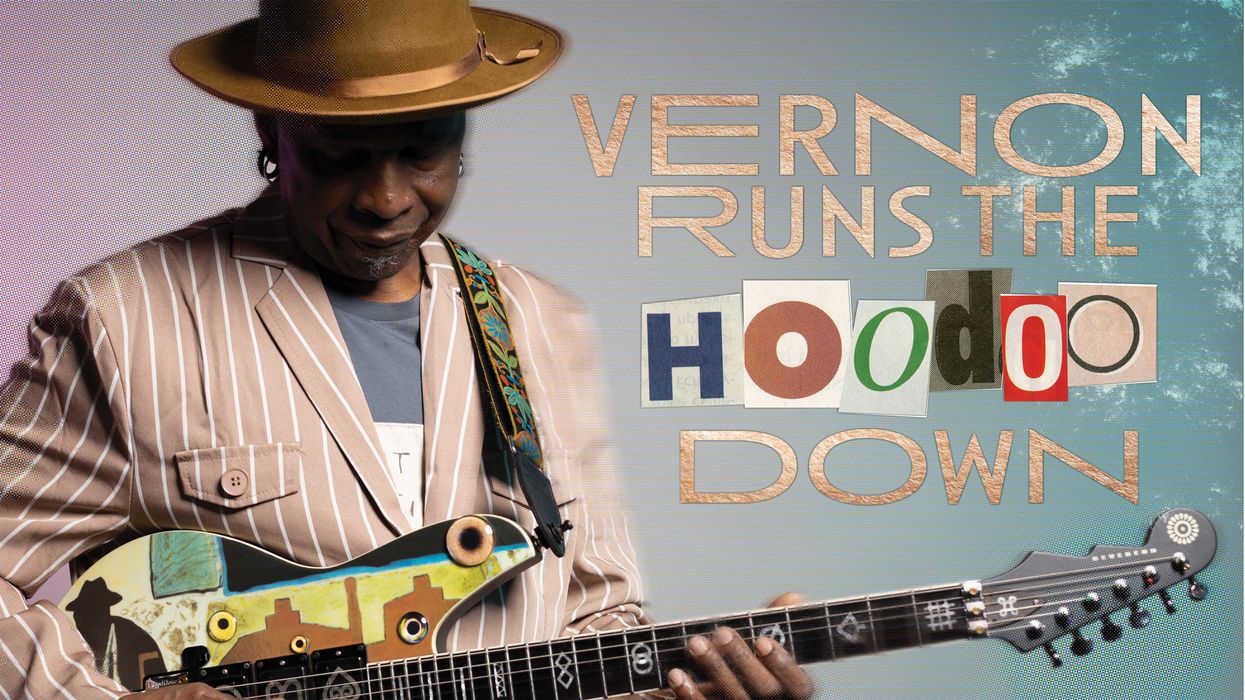

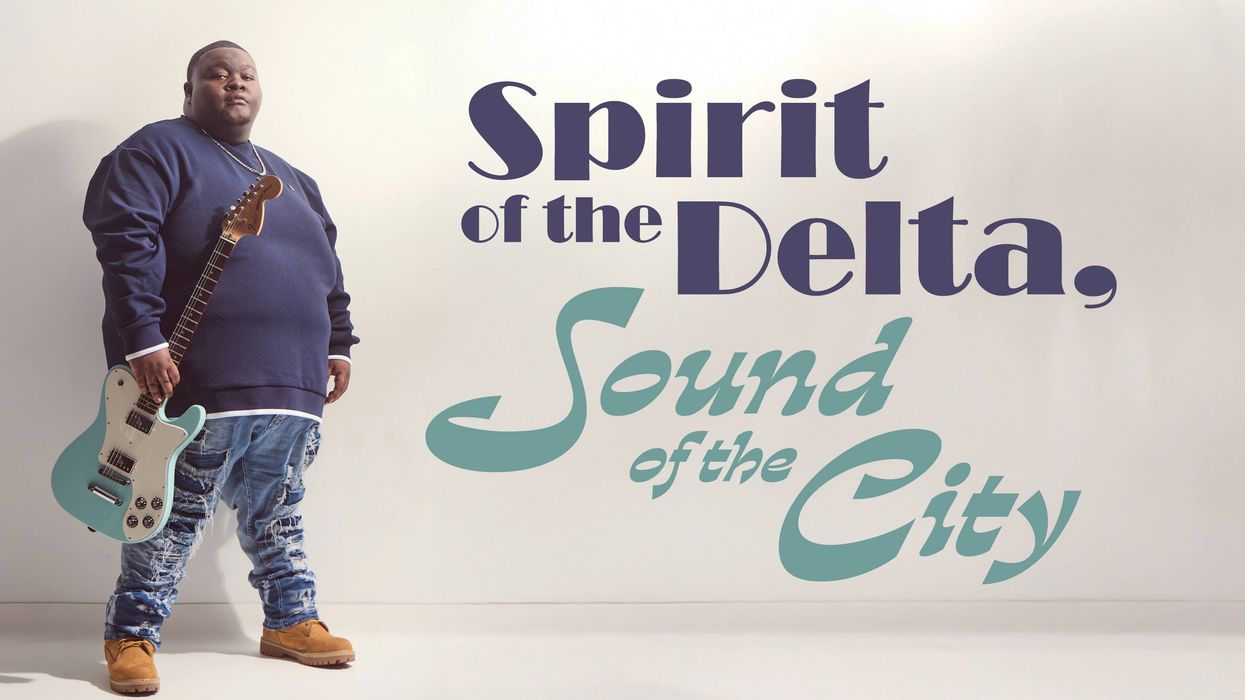
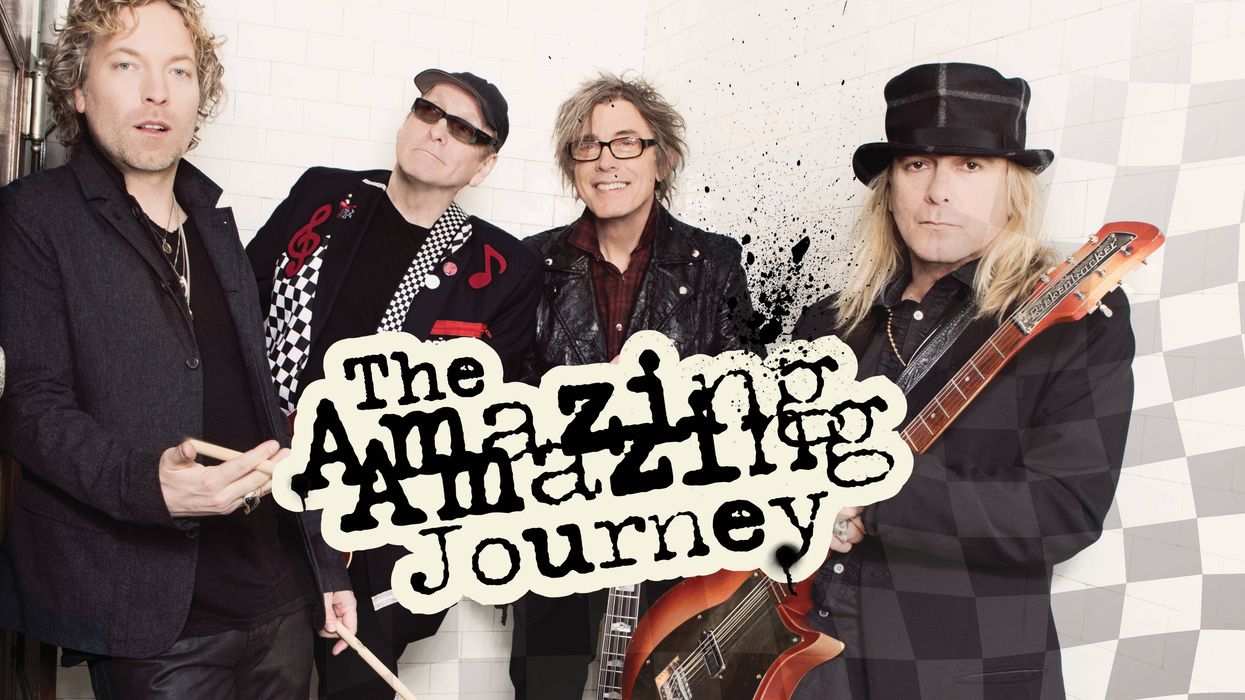
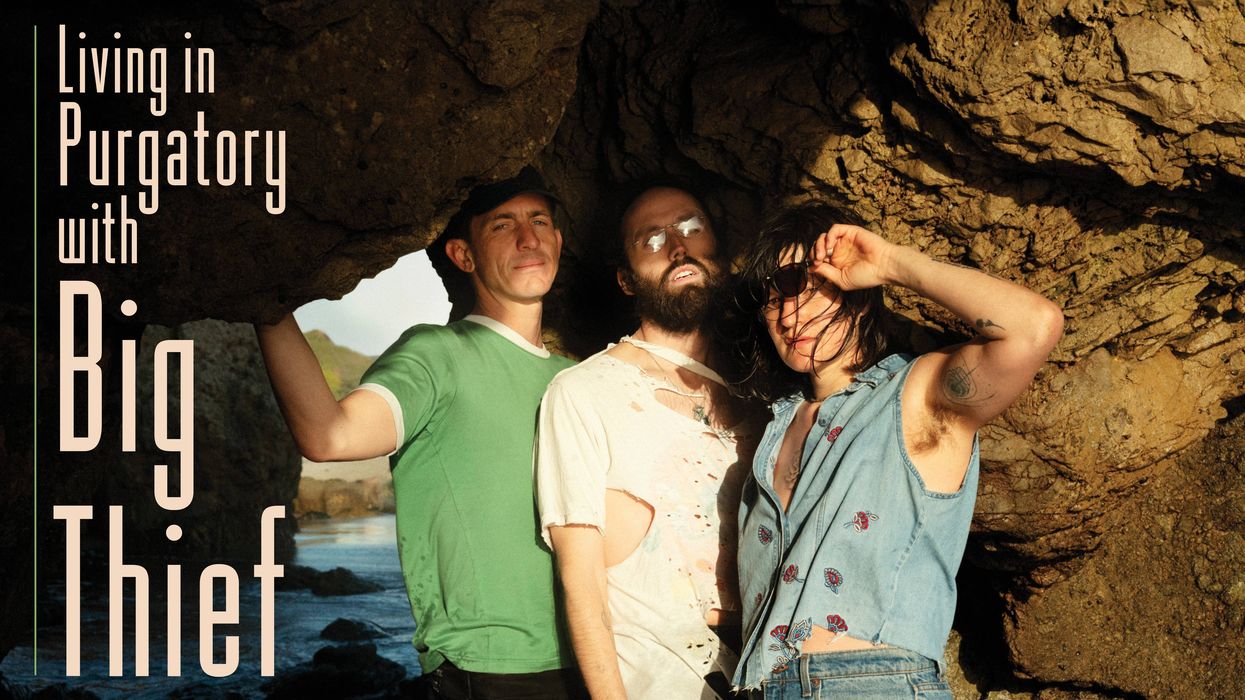
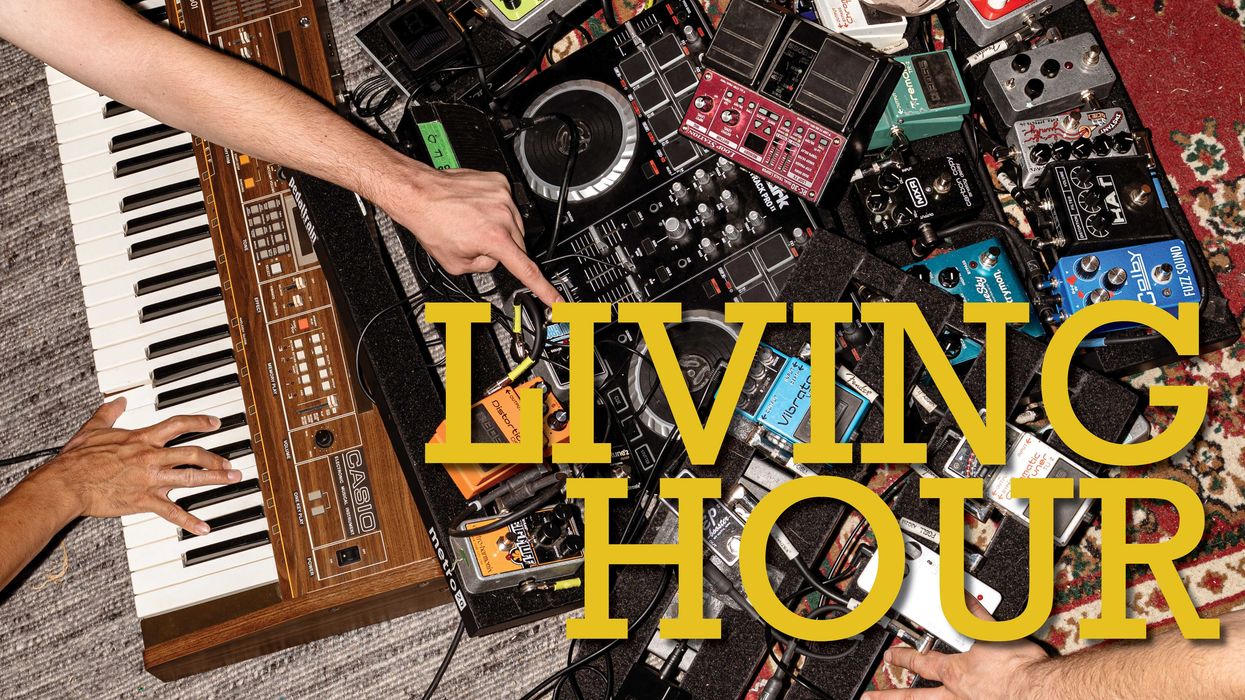
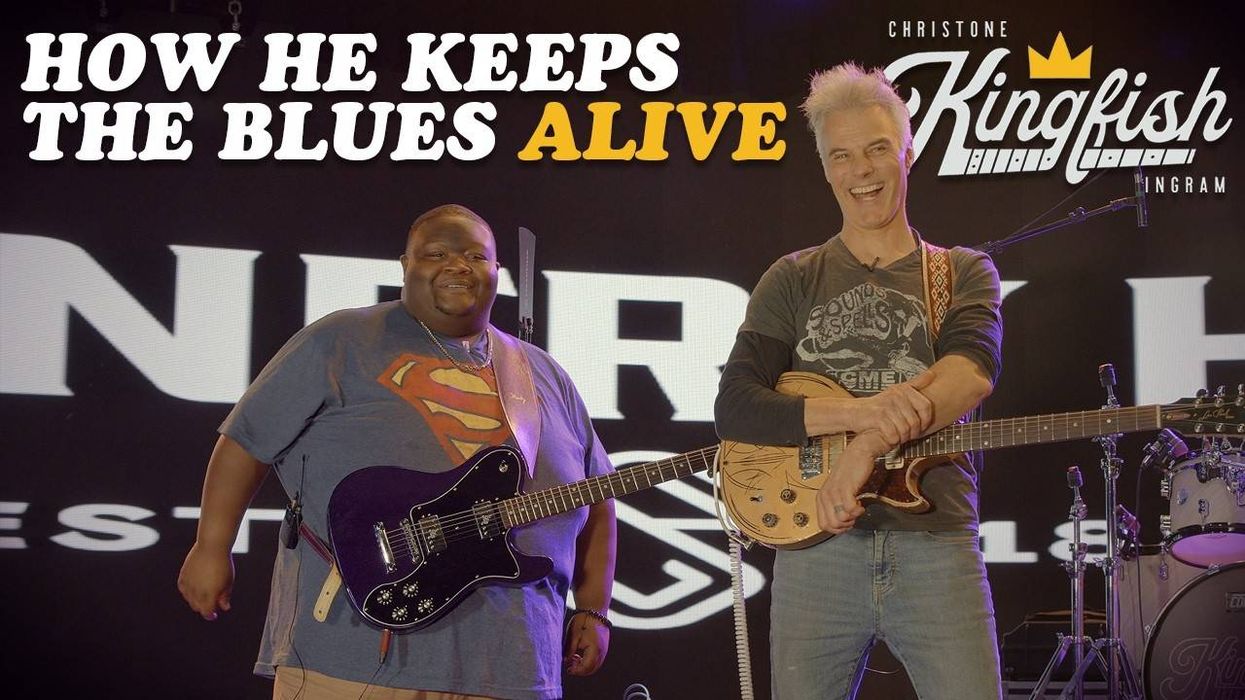
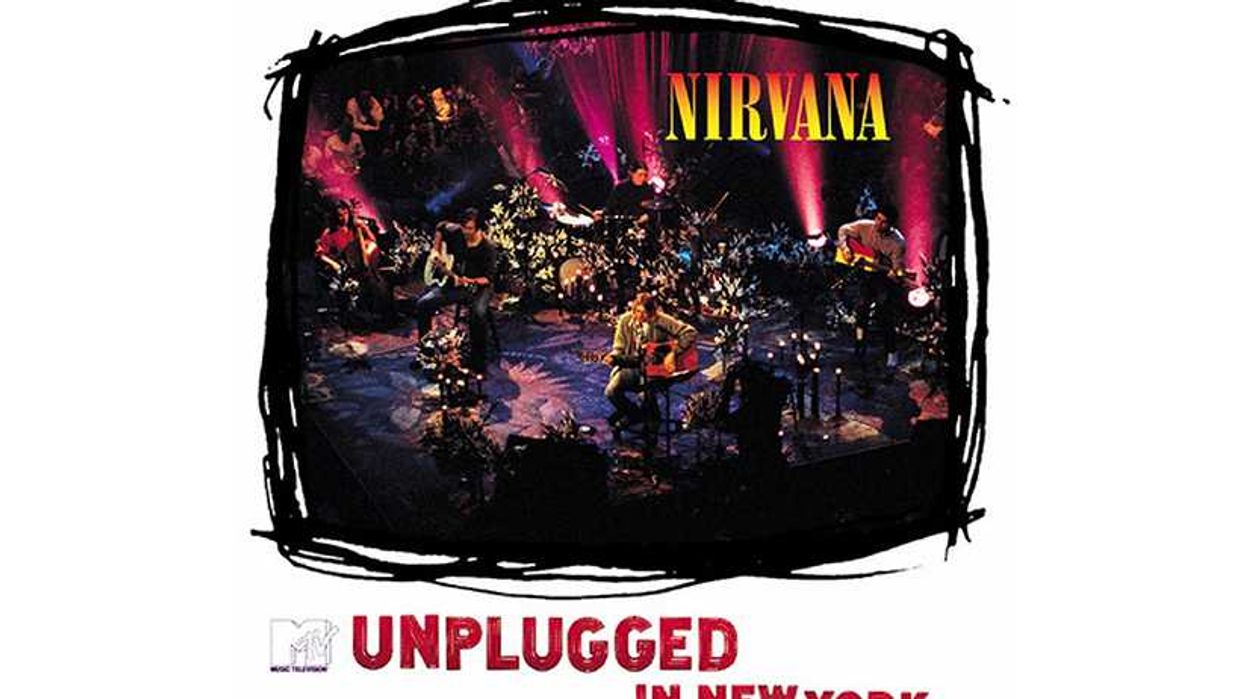
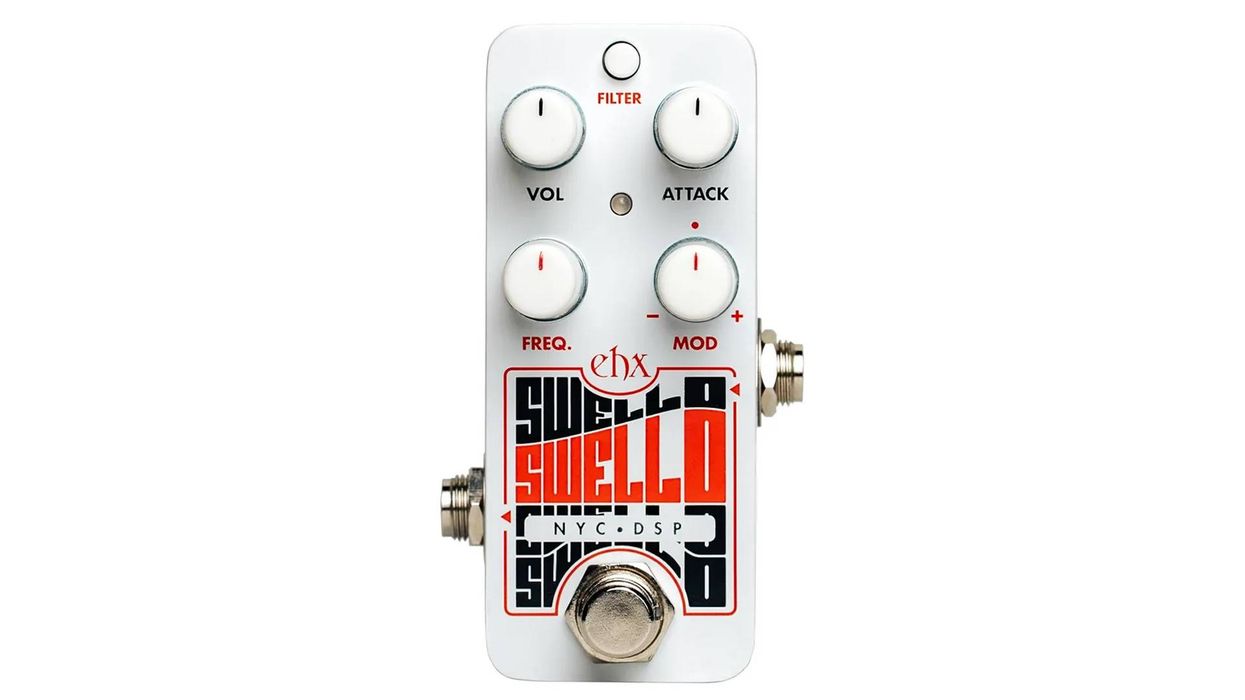
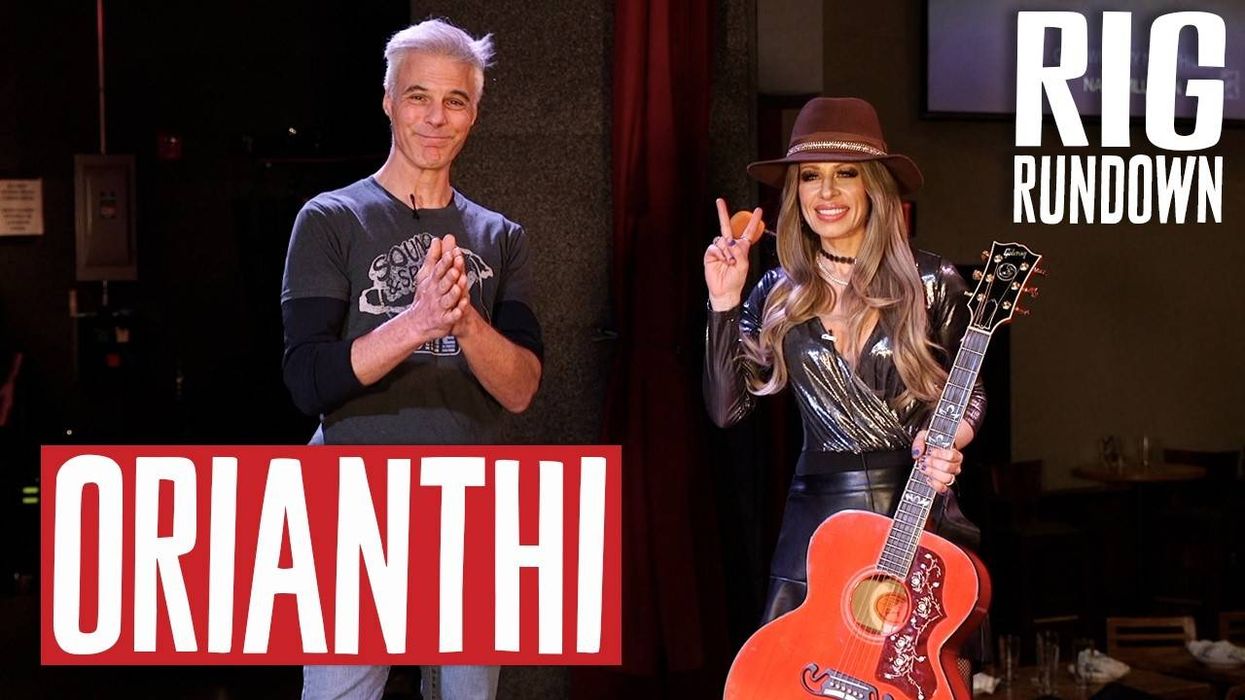

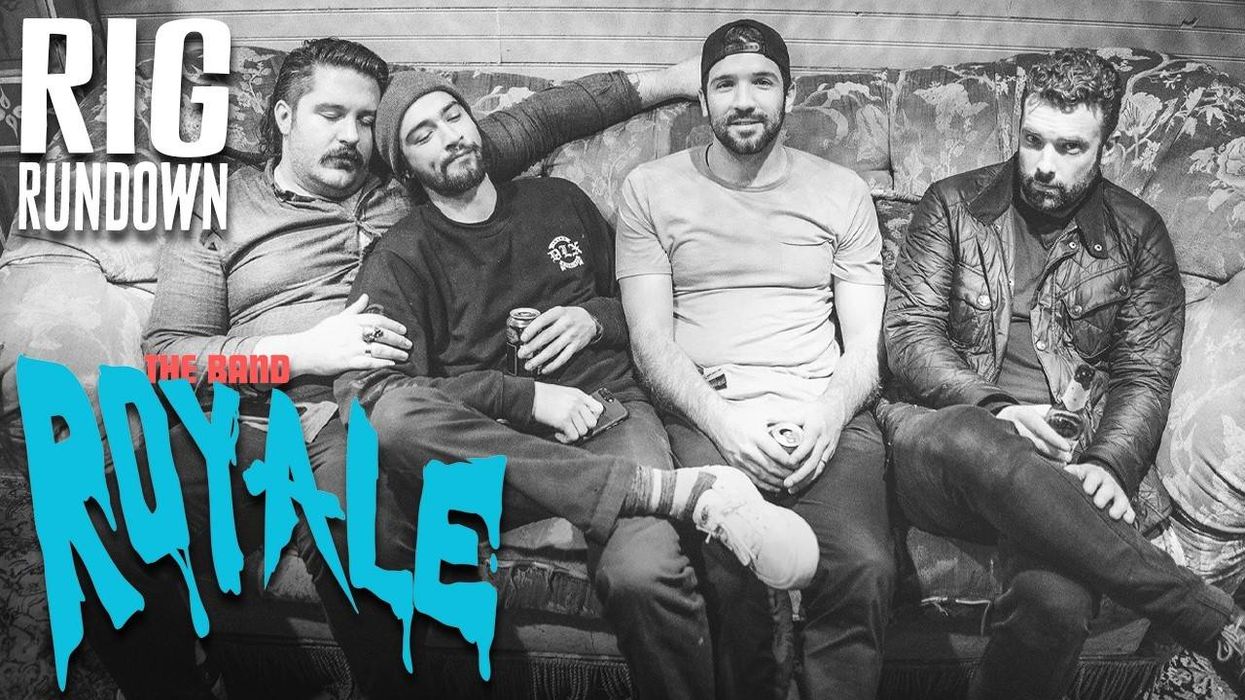
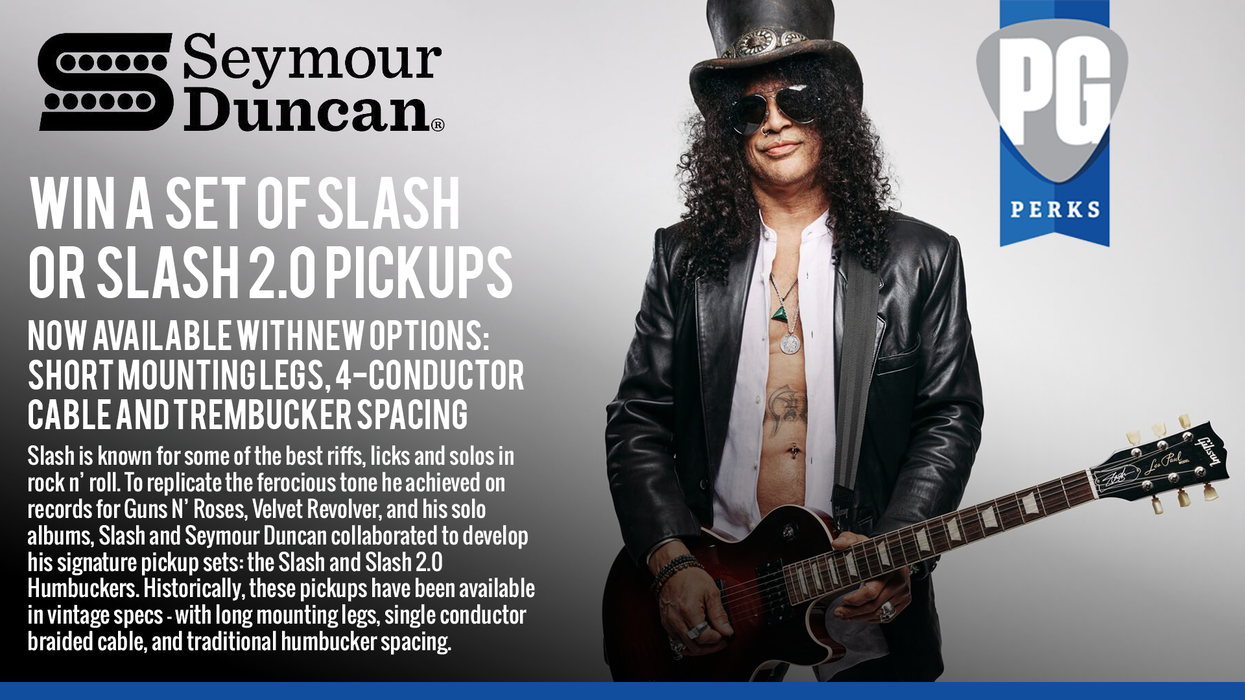
![Rig Rundown: AFI [2025]](https://www.premierguitar.com/media-library/youtube.jpg?id=62064741&width=1245&height=700&quality=70&coordinates=0%2C0%2C0%2C0)
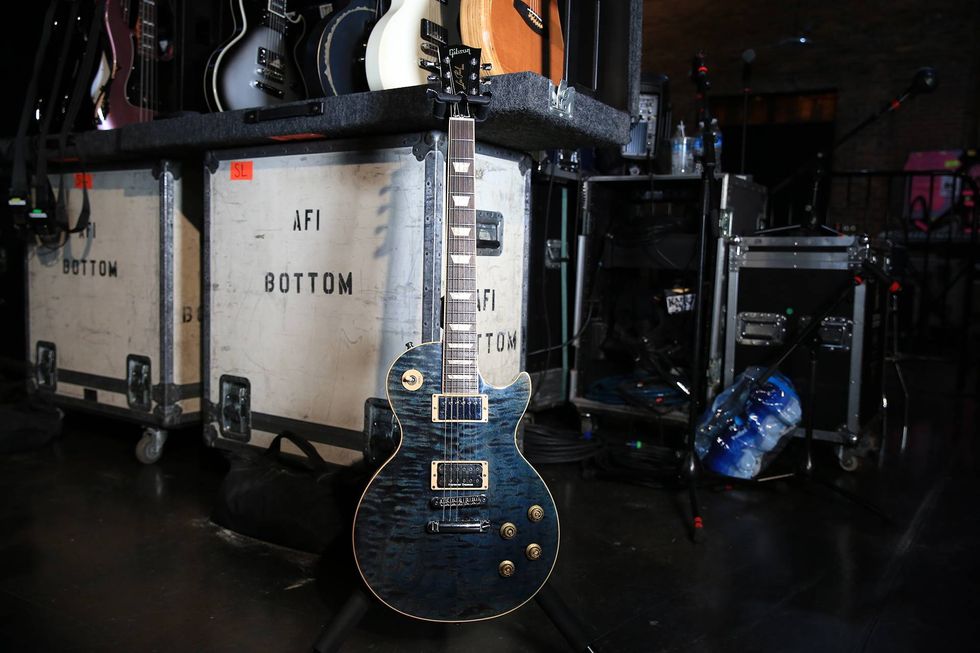
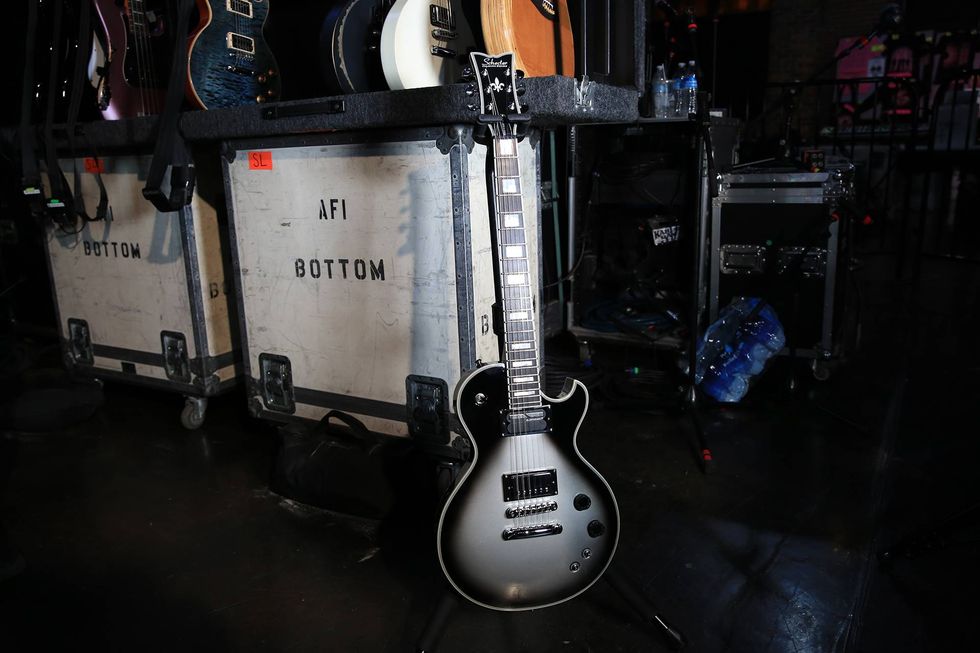
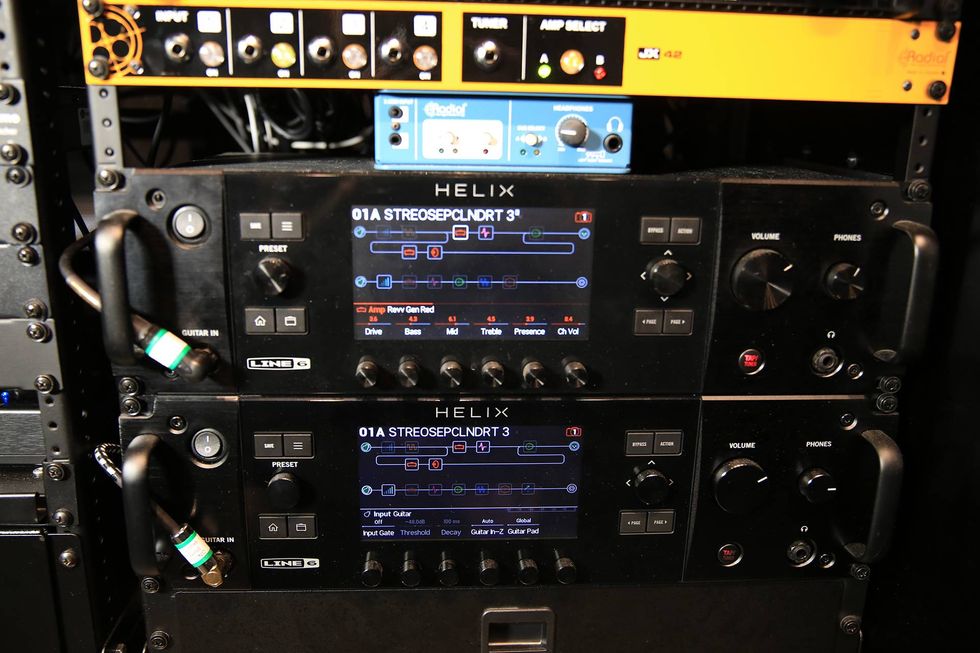
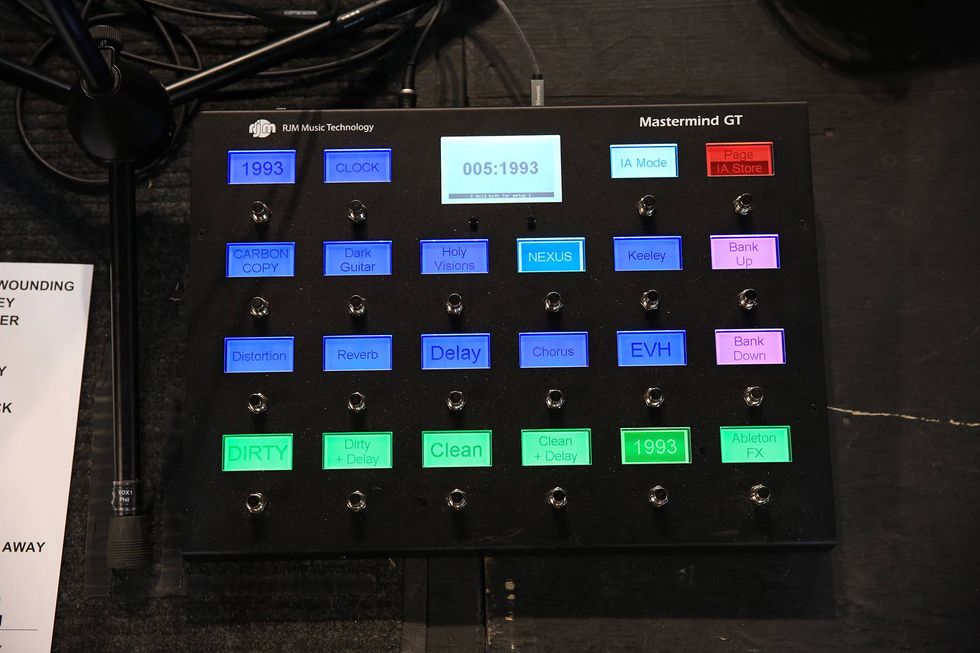
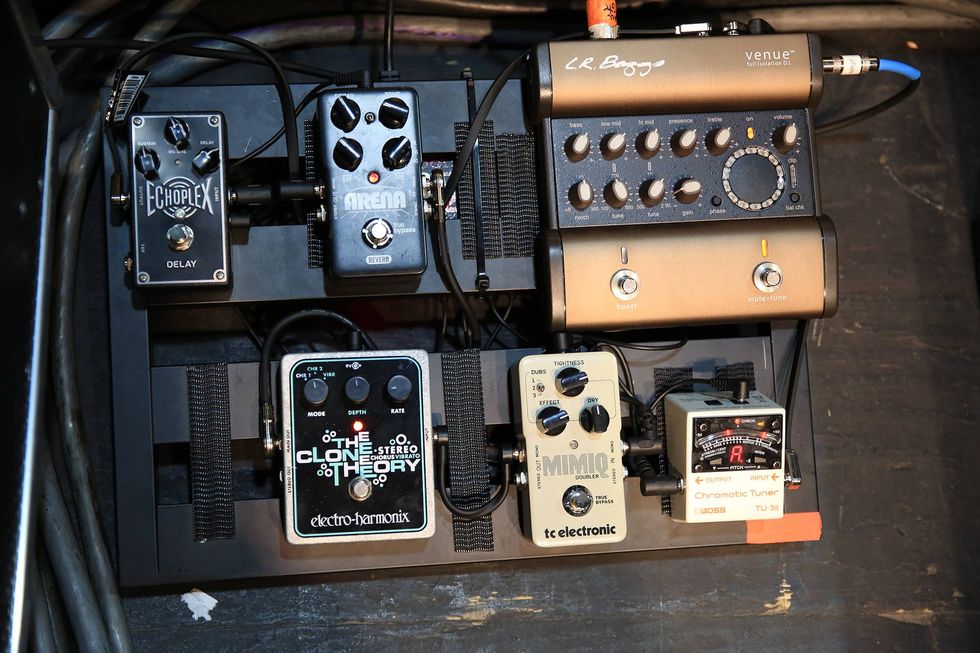
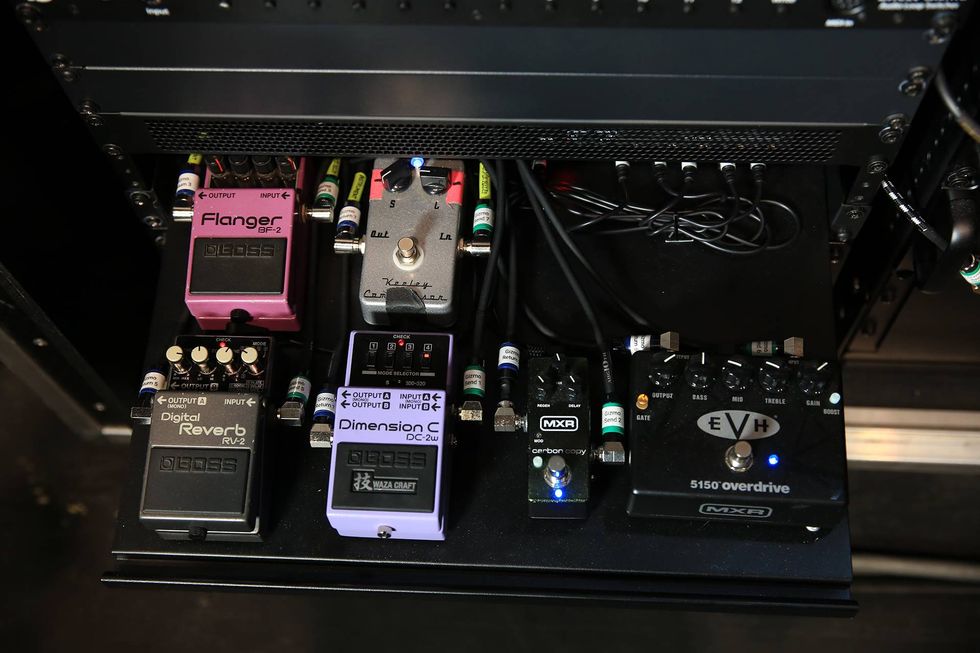
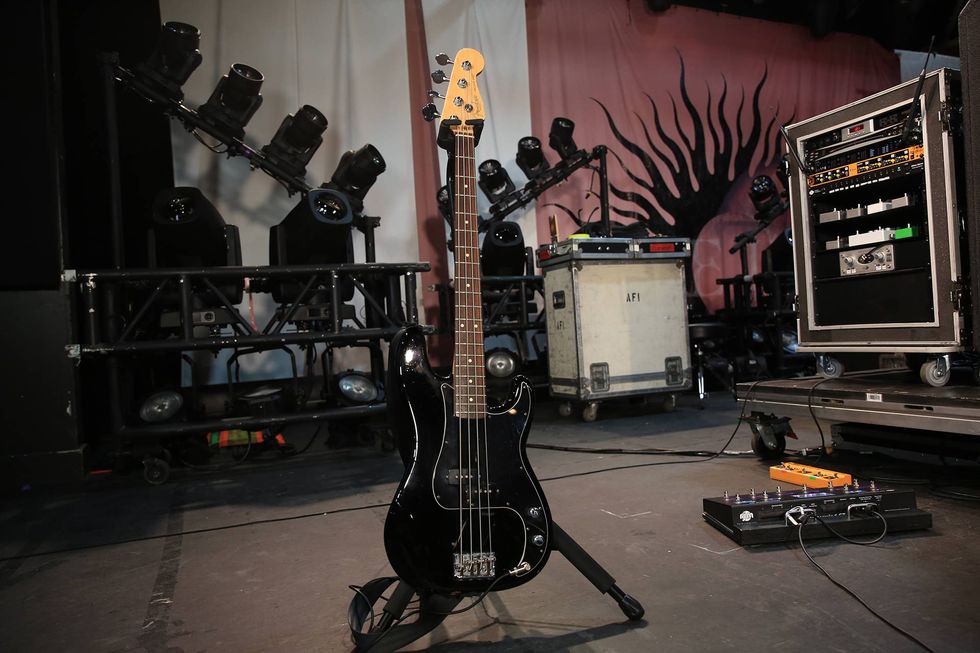
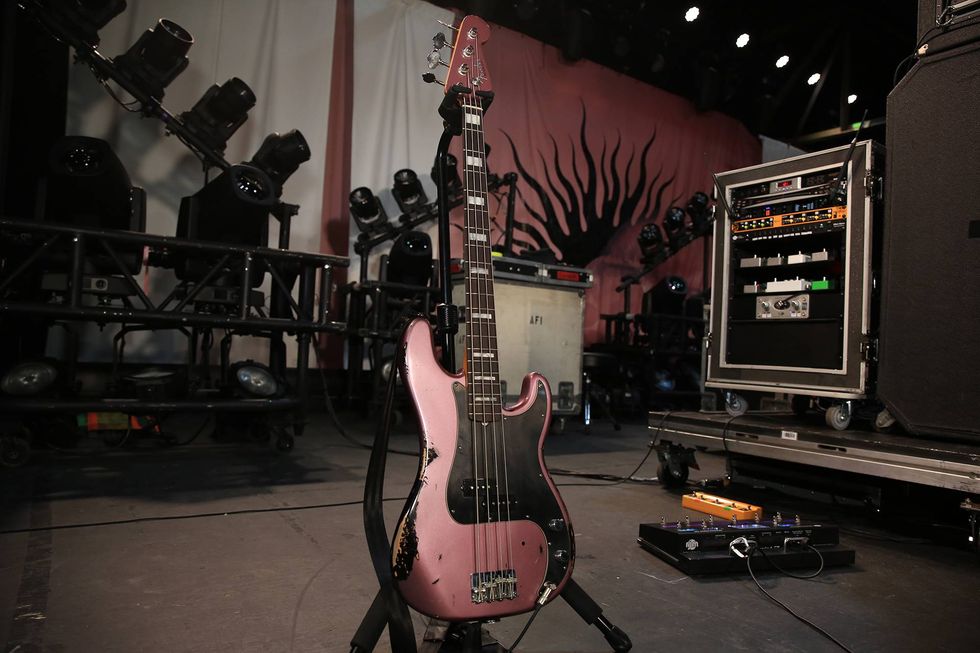
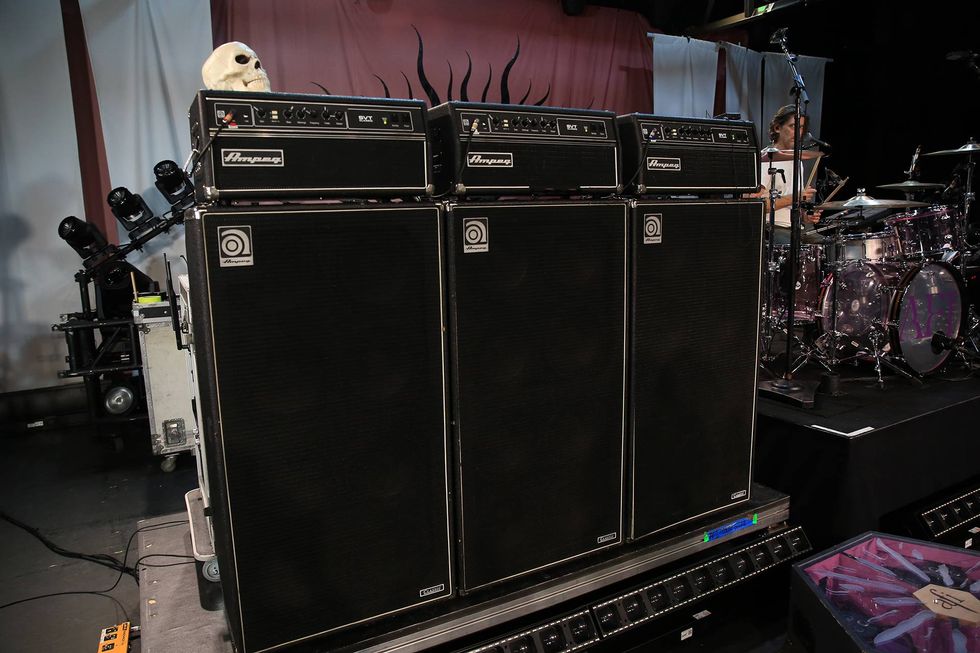
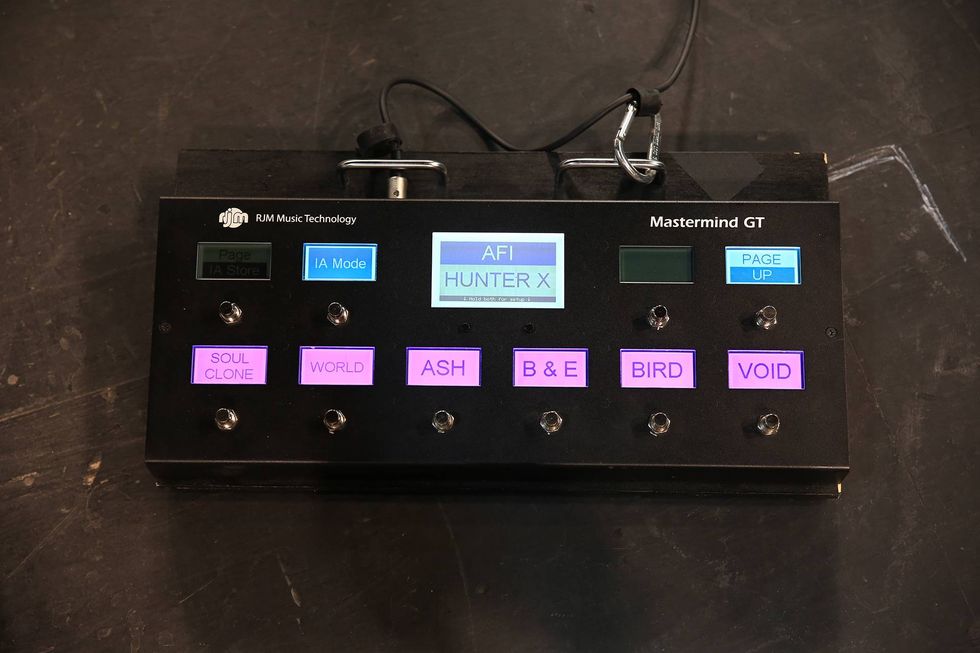
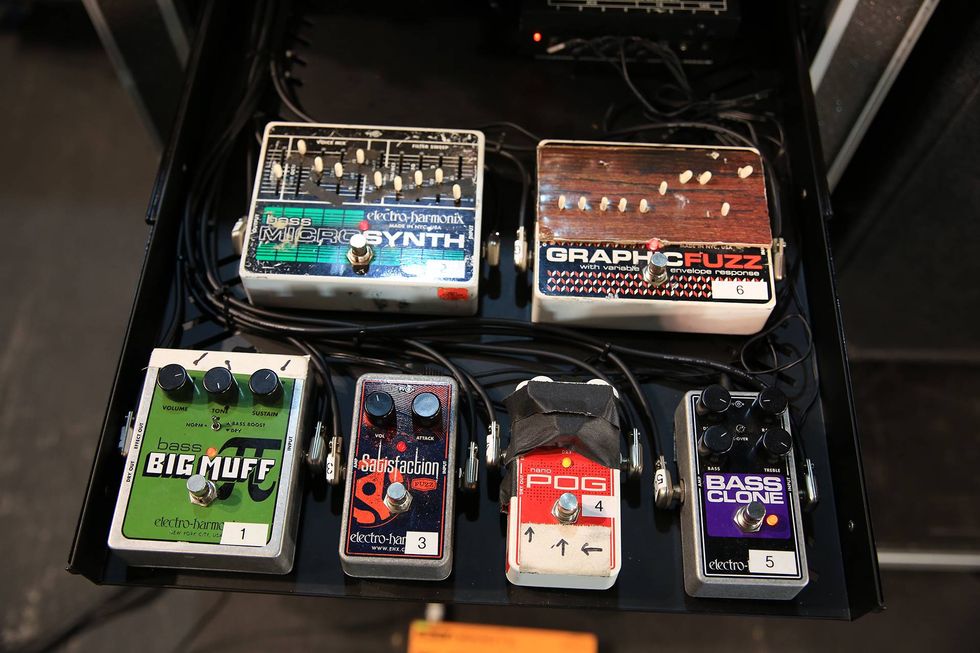
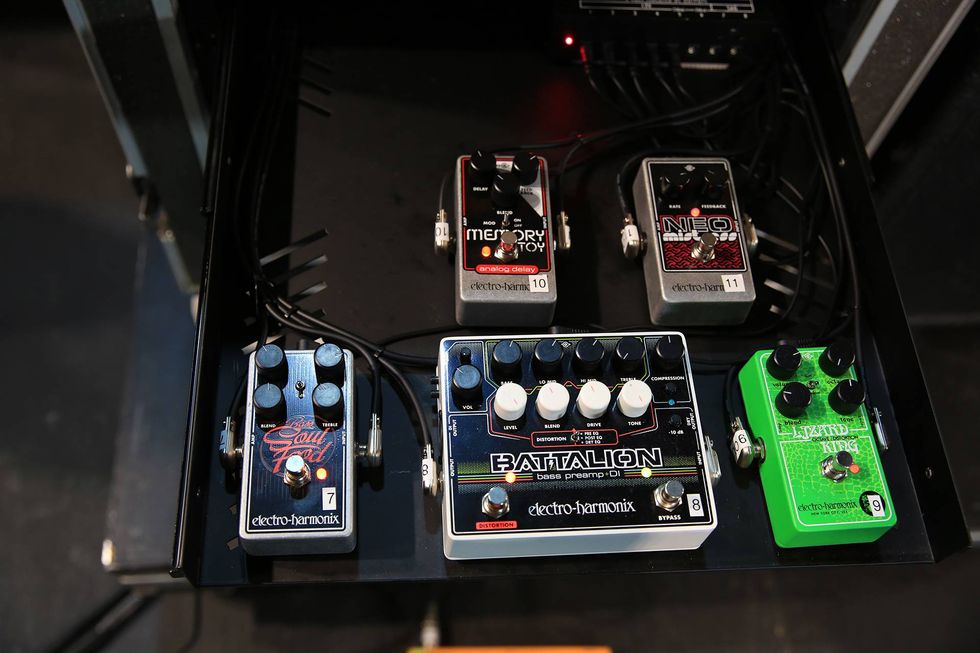
 Shop Scott's Rig
Shop Scott's Rig![Devon Eisenbarger [Katy Perry] Rig Rundown](https://www.premierguitar.com/media-library/youtube.jpg?id=61774583&width=1245&height=700&quality=70&coordinates=0%2C0%2C0%2C0)
